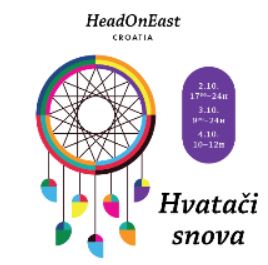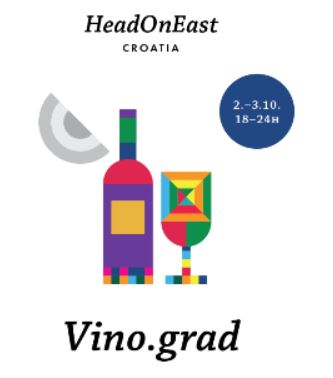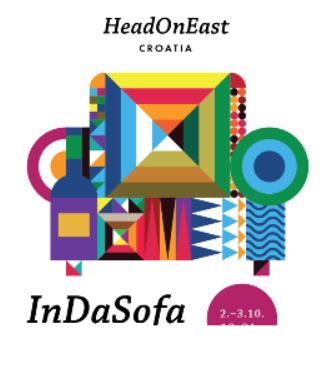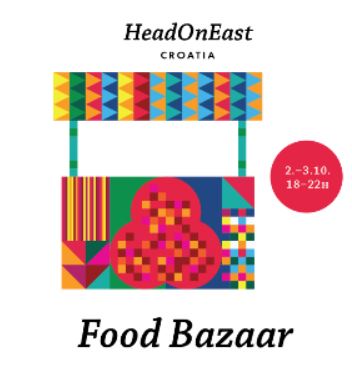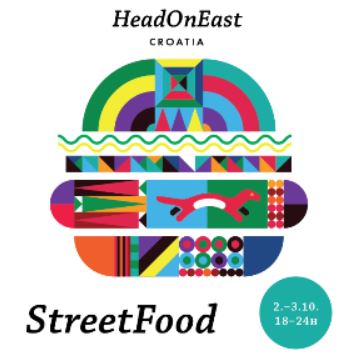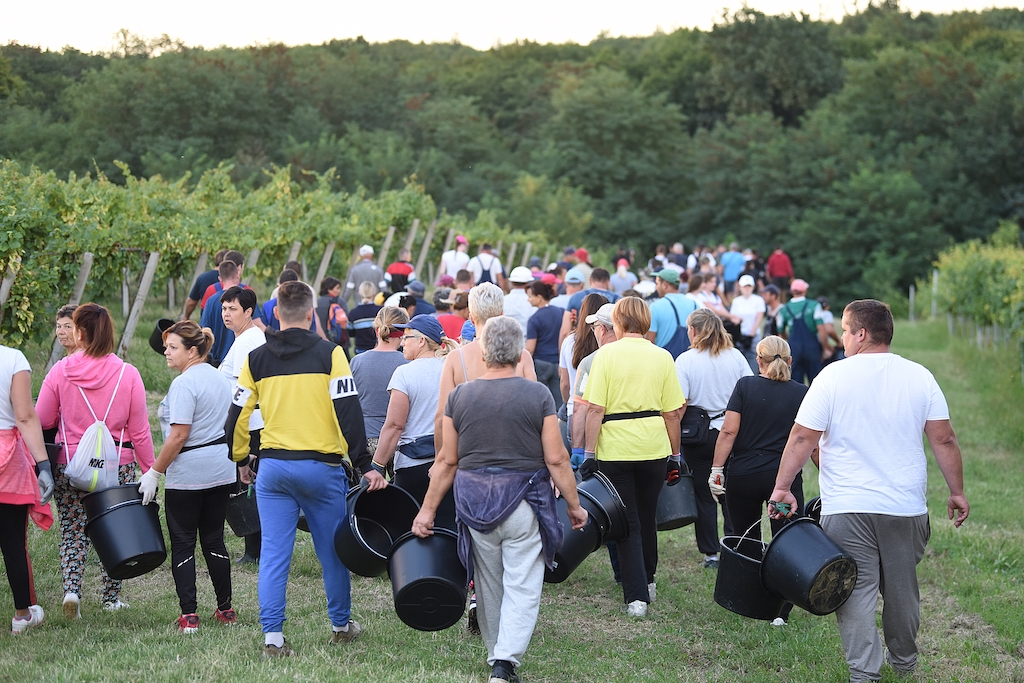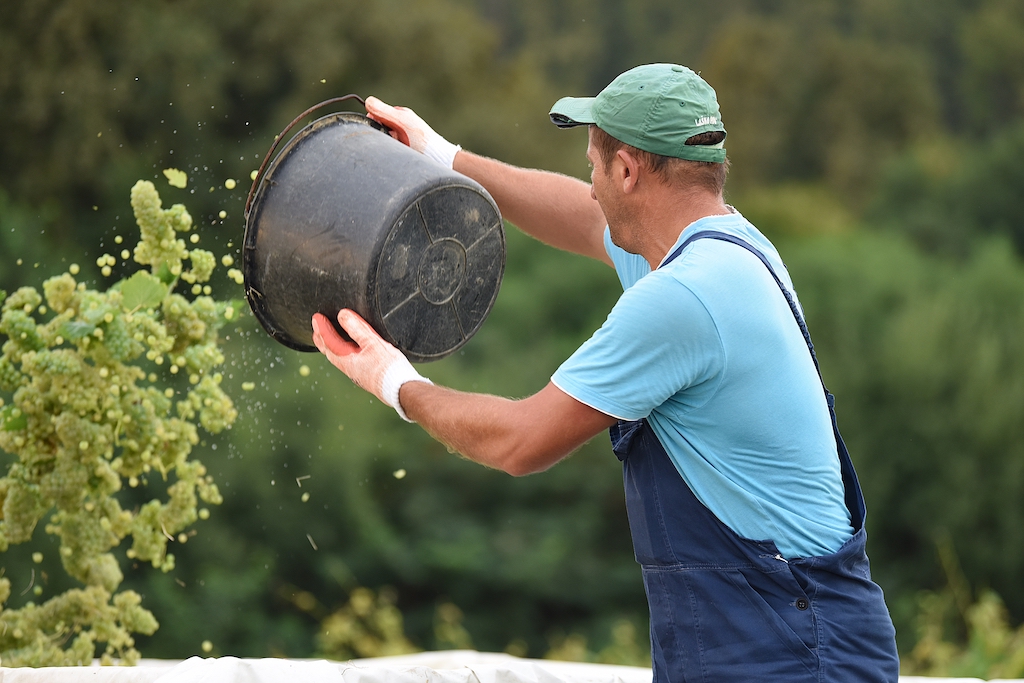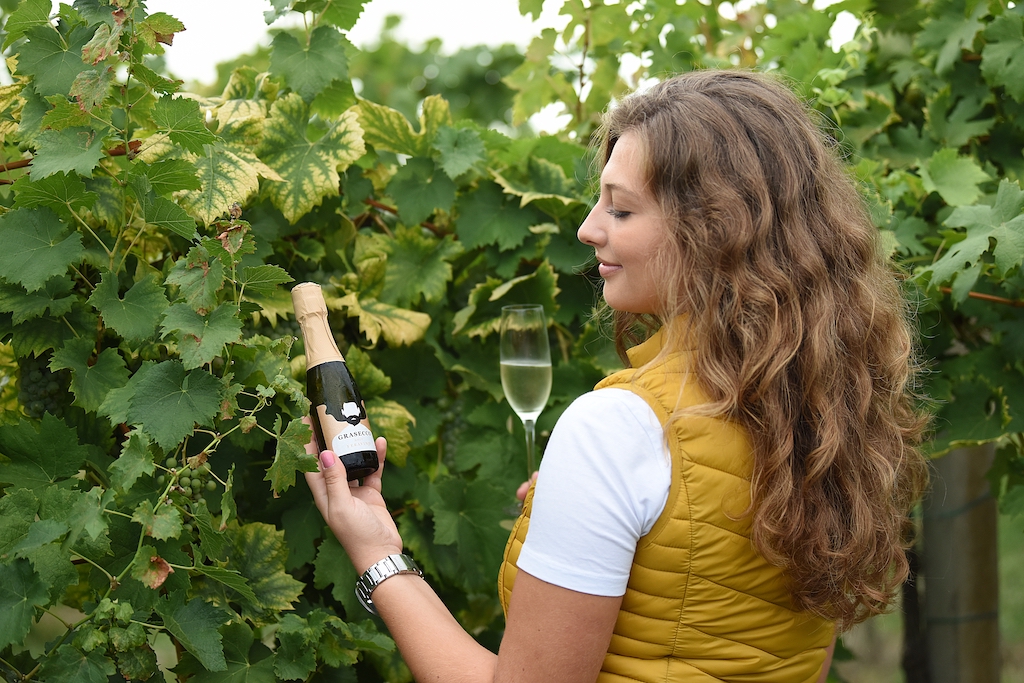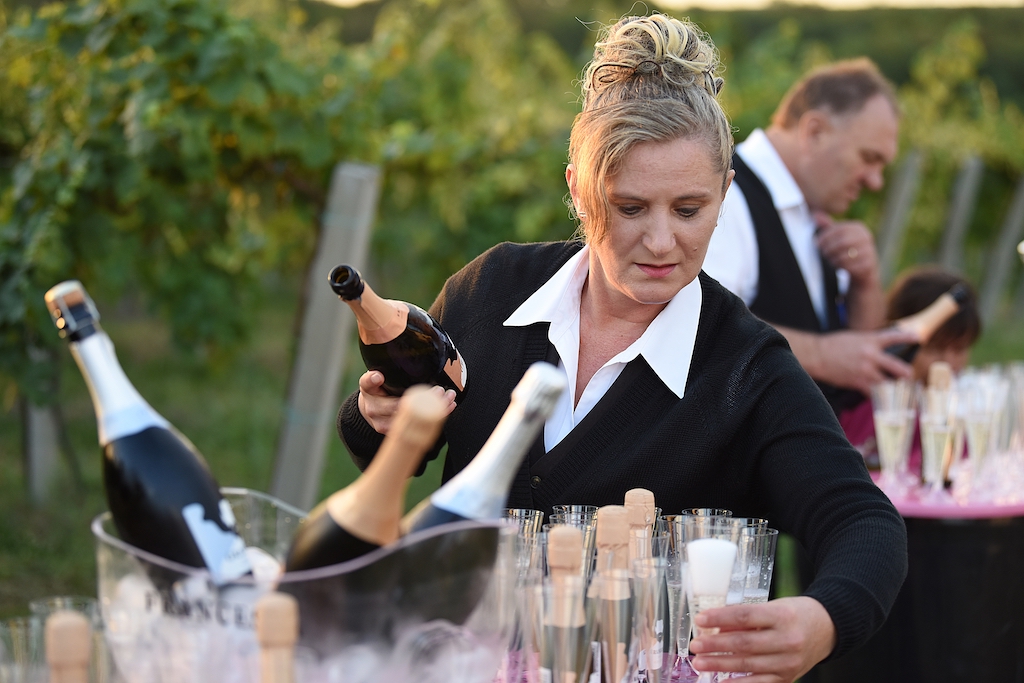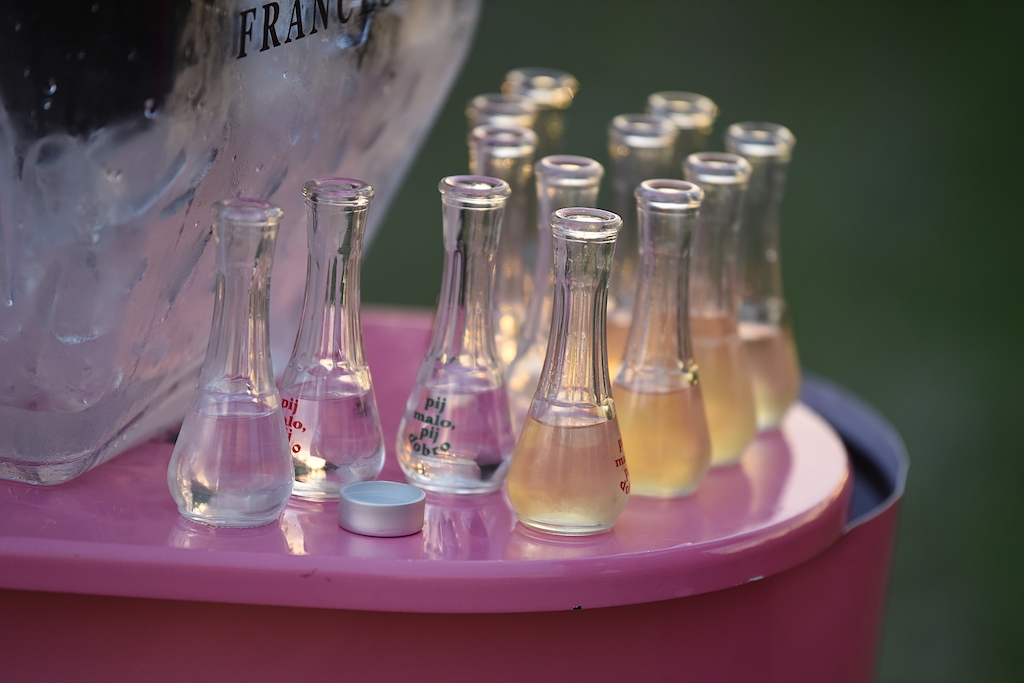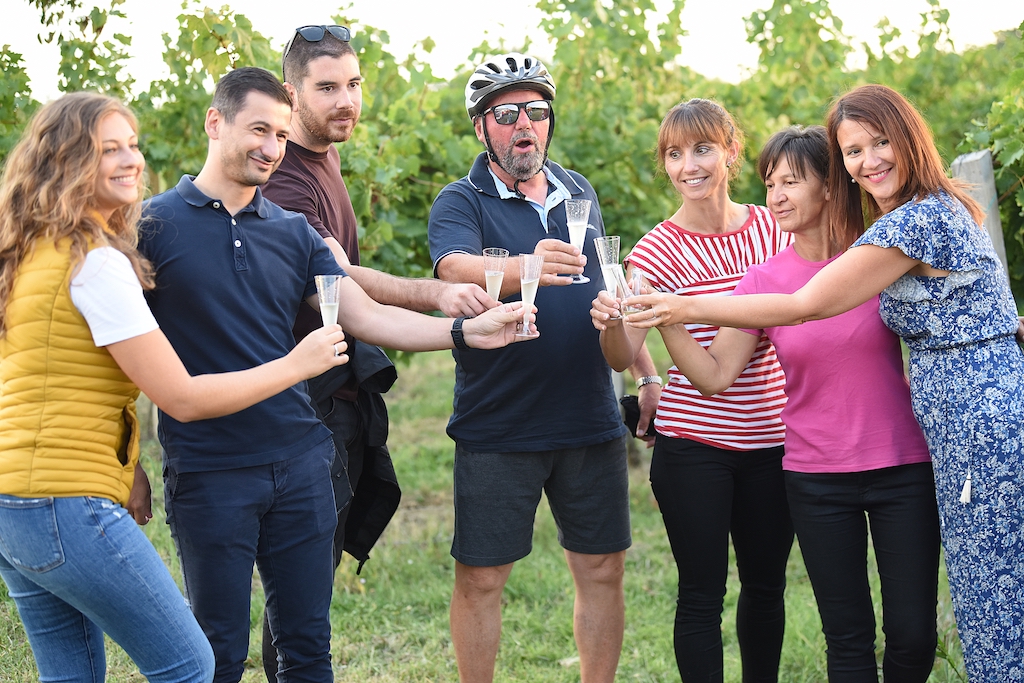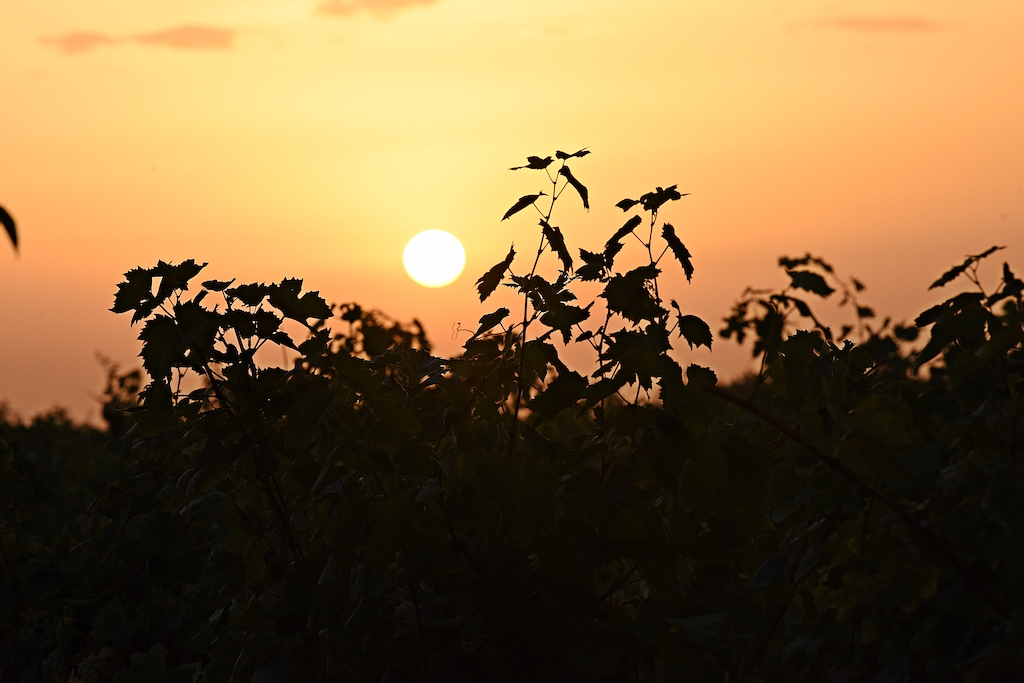VIDEO + PHOTOS: Vukovar Tower Opens In Spectacular Ceremony
October 30, 2020 - Fireworks pierced the sky, music filled the air and a striking choreography of colours lit the Vukovar Tower at this evening's grand unveiling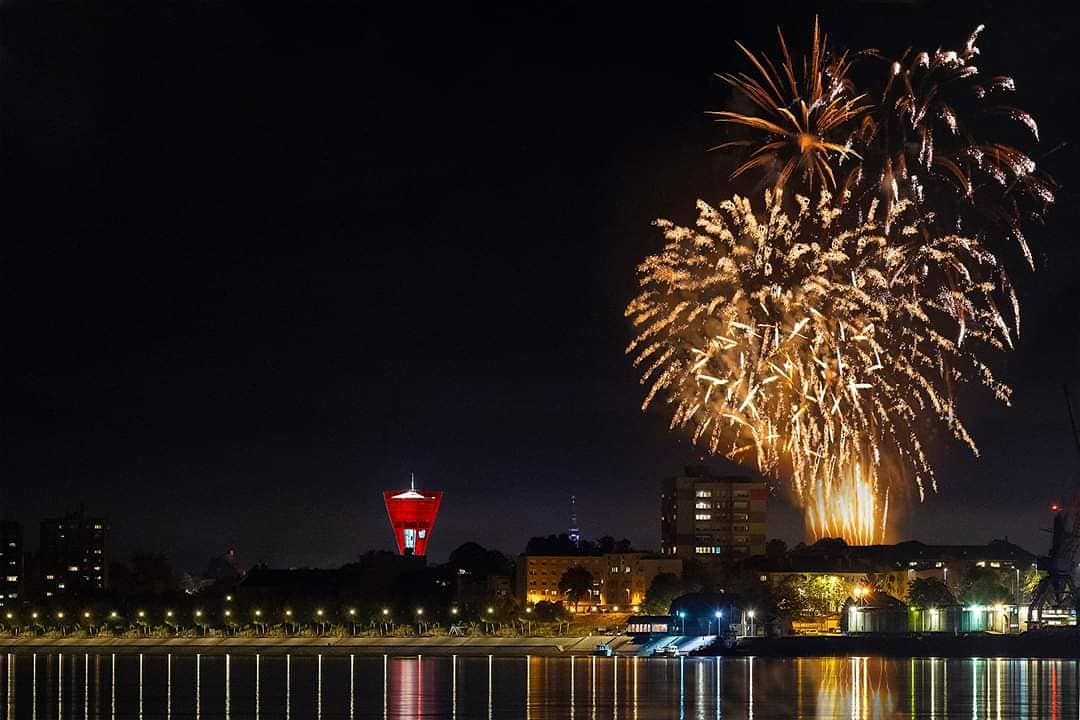
© Marko Džavić
Fireworks pierced the night sky, music filled the air and a striking choreography of colours lit the monument at this evening's official unveiling of the renovated Vukovar Tower. In a well-measured and memorable ceremony, the chill of the autumnal early evening was replaced with a myriad of heartfelt emotions.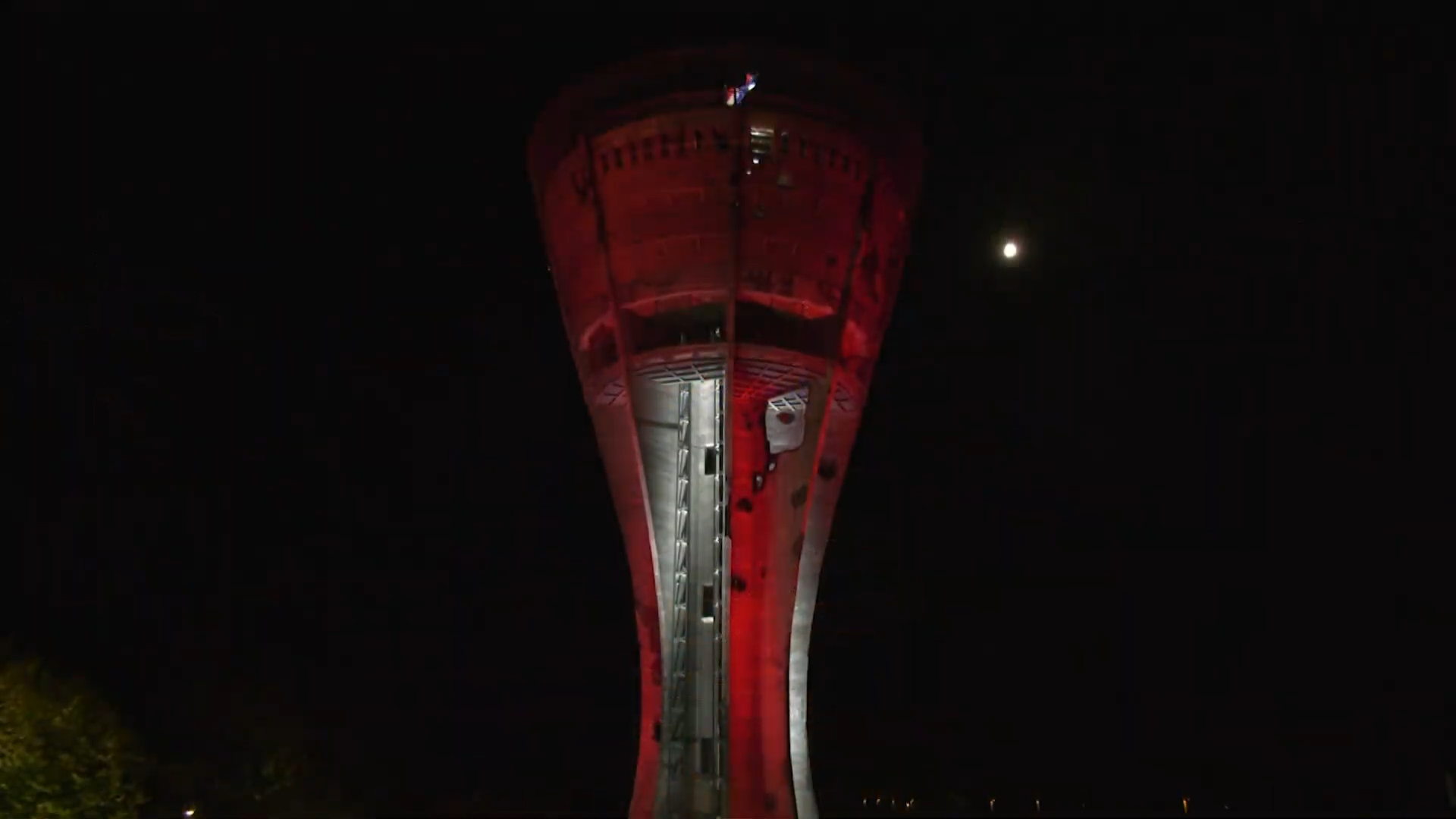
One of the most recognised symbols of remembrance of Croatia's Homeland War, the Vukovar Tower has been under renovation for three years. Famously damaged in fighting during the war, its scars are a constant reminder of the heavy bombardment the town received. The Vukovar tower has undergone renovation needed to ensure its survival and to open up the structure to public visitation. Around 46 million kuna has been spent on the project, with much of the money coming from public donations.
Fireworks, as seen from spectators on the ground
Music at the opening ceremony ranged from solemn ballads delivered by Croatian pop stars, several all-male choirs and the traditional tamburaci folk music of Slavonia. The ceremony was broadcast live on the web pages of the City of Vukovar and on local TV channels.
The full hour-long ceremony
The Vukovar tower was built in 1968 and stands 50 metres high. It is difficult to judge its size from pictures, but at the time it was built, the structure was one of the largest water towers in Europe. In the times before the war, it held a restaurant with a panoramic view of the town and the surrounding Slavonian countryside. During the war, the Vukovar Tower was hit with more than 600 missiles. It thereafter became a symbol of resistance, then of remembrance.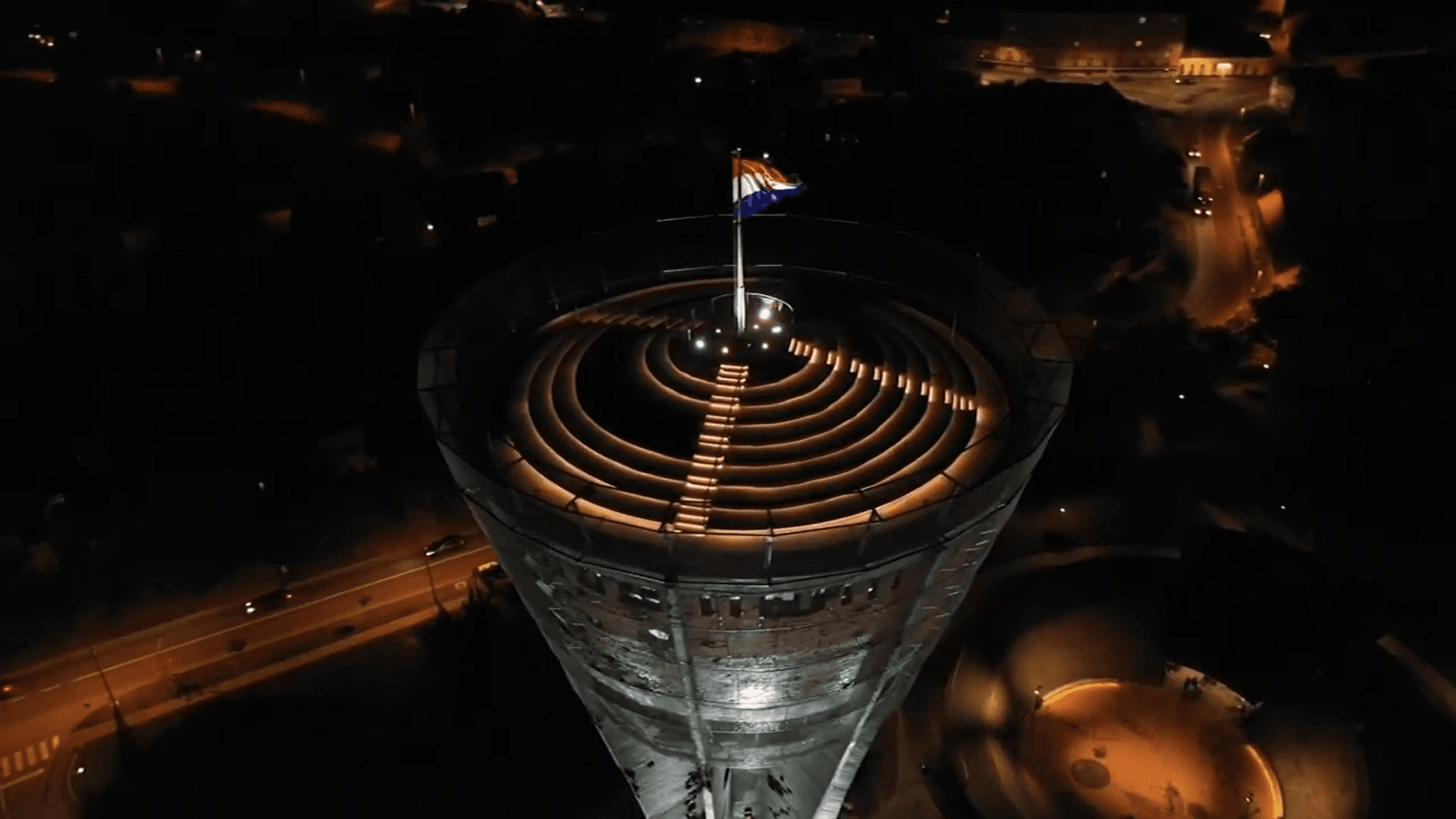
An integral part of the monument, the scars on the tower have been preserved in the renovation but shored up so that the Vukovar Tower can stand indefinitely. A new memorial space within the tower was presented as part of the unveiling. The monument will hereafter become part of Vukovar's most-visited buildings. Tens of thousands of Croatians visit Vukovar each year. Its art, culture and beautiful nature draw many, but large numbers also make the trip in remembrance of the war and the lives lost in the town. Almost every Croatian school year will make an organised trip to the town for this purpose.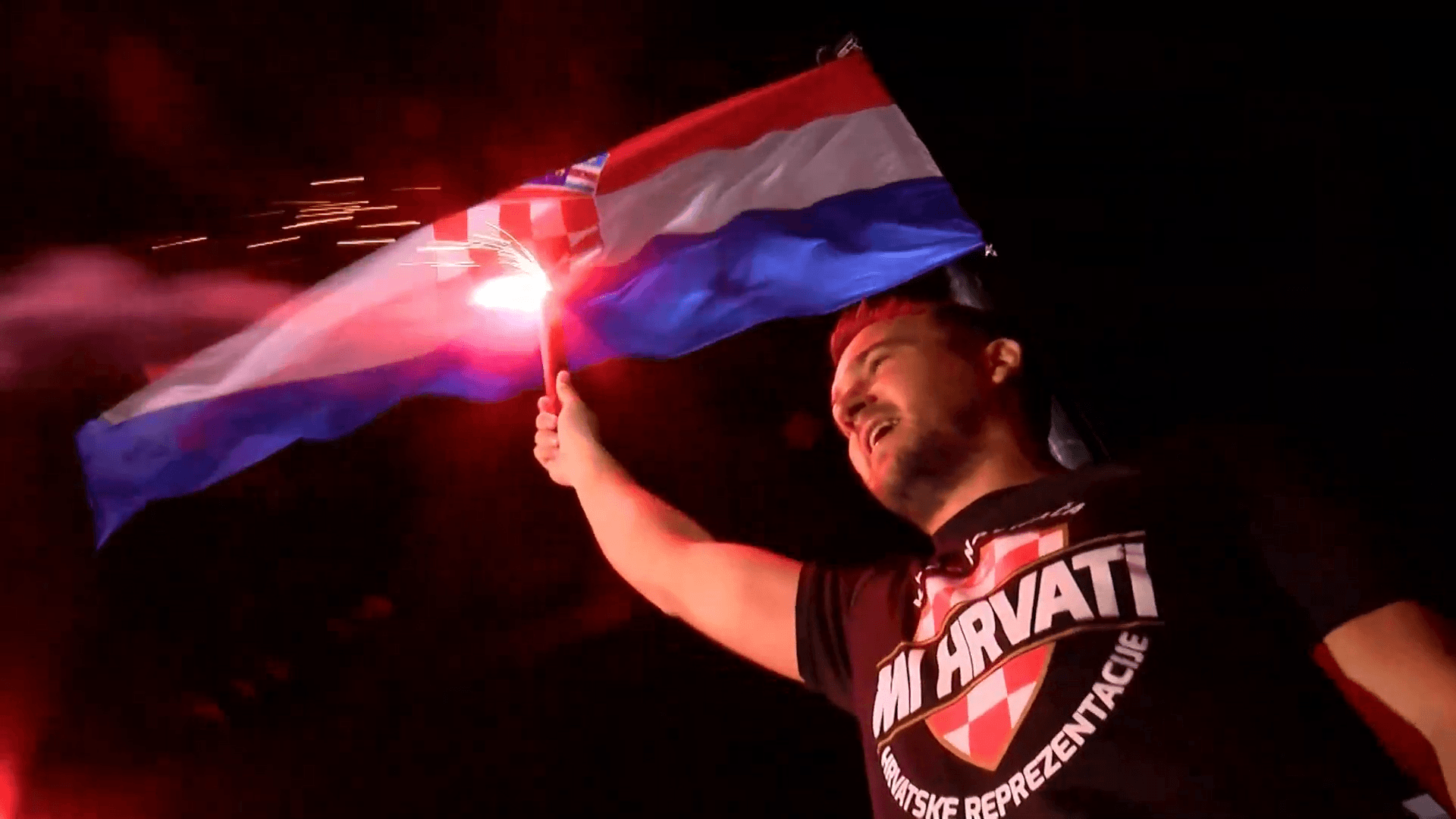 All uncredited photos © Grad Vukovar
All uncredited photos © Grad Vukovar
For the latest travel info, bookmark our main travel info article, which is updated daily.
Read the Croatian Travel Update in your language - now available in 24 languages
PM Says Contracts Signed for 88% of Slavonia Project Allocation
ZAGREB, October 5, 2020 - Prime Minister Andrej Plenkovic said in Nasice on Monday that so far project contracts worth HRK 16.53 billion had been signed for the "Slavonia, Baranja and Srijem" project, which is 88% of the total allocation, and that HRK 6.6 billion had been paid.
This is an increase of HRK 5.2 billion in project value and an increase of HRK 2.1 billion in the amount of funds paid compared to the last session of the Council, held in Vukovar, Plenkovic said while opening the 11th session of the government's Council for Slavonia, Baranja and Srijem.
He noted that 2020 had been one of the most challenging years for Croatia in the past 25 years due to the coronavirus pandemic and its impact on the national economy as well as other aspects of life.
"Despite that, we have managed to reduce the expected drop in GDP, thanks to the timely lifting of the lockdown we have managed to achieve close to 50% of last year's tourism results, we have completed the presidency of the Council of the EU and we are now focusing on ensuring social security, economic sovereignty, notably in farming and the energy sector, and on making the country more recognisable globally," said Plenkovic.
In that context, he pointed to €22 billion from the EU budget available to Croatia in the next seven years, noting that that was particularly important for Slavonia, for the country's cohesion policy and for its farming and rural development policies.
Plenkovic said work was underway on revising the development strategy for the period until 2030 because it had been made before the pandemic and the now changed economic circumstances, and that it was being finalised.
The PM said that he would expand the development agreement for Slavonia, Baranja and Srijem to legalise changes for the already determined projects, and to establish which projects had not been granted funding so far.
He said the development agreement would include 38 strategic projects worth HRK 10.7 billion.
"We will continue with the project of integrated territorial investments for urban areas, Osijek and Slavonski Brod, and continue with the programme for the integrated, economic and social regeneration of small towns in formerly war-affected areas, in order to reduce differences in the level of development," said Plenkovic.
At the end of today's session of the Council contracts and decisions will be signed.
The Council for Slavonia, Baranja and Srijem was established in March 2017 as an advisory body for the coordination of the process of absorption of money from European structural and investment funds, EU instruments and programmes, the European Economic Area and national funds, under the Slavonia, Baranja and Srijem project, as part of which €2.5 billion has been secured from EU funds for projects in the five Slavonian counties.
(€1 = HRK 7.55)
For the latest travel info, bookmark our main travel info article, which is updated daily.
Read the Croatian Travel Update in your language - now available in 24 languages
Continental Croatia Trains: Inland Opens Up With Green Travel
October 3, 2020 - With charter airlines in a state of flux and Croatia Railways beginning a renewal of their fleet in Slavonia, are continental Croatia trains the eco-friendly and best way to unlock the inland's amazing potential?
Everything changes. Nothing stays the same. Even before 2020 arrived, lifestyles and trends were headed in new directions. Eco-tourism and agro-tourism were two of the fastest-growing areas within the travel sector, this behaviour change a response to concerns about the environment. And nowhere in the country stands better poised to take advantage of this interest than continental Croatia.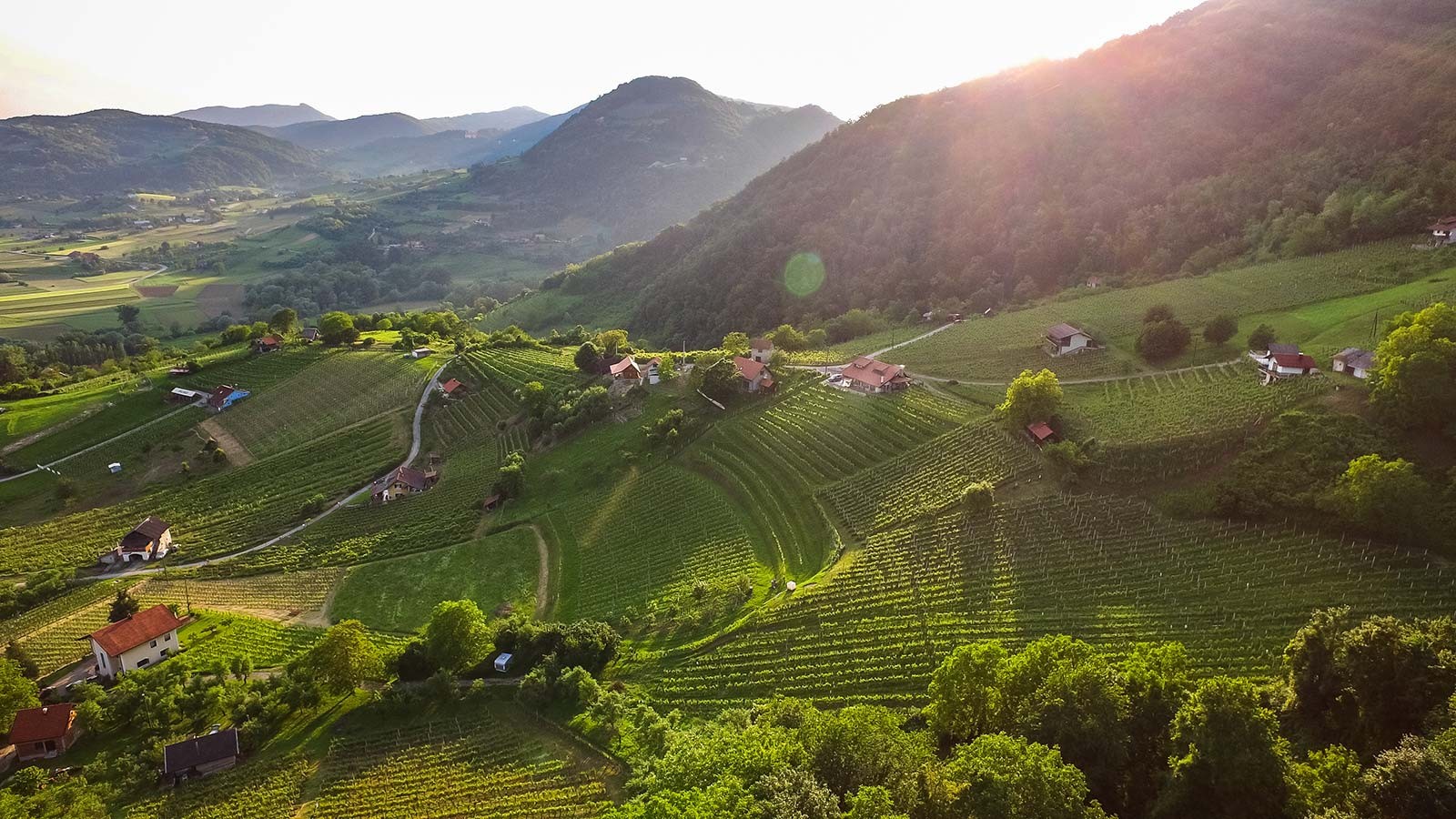 Impossibly pretty Zagorje - the region lies just north of Zagreb and is accessible by continental Croatia trains © Ivo Biocina / Croatia National Tourist Board
Impossibly pretty Zagorje - the region lies just north of Zagreb and is accessible by continental Croatia trains © Ivo Biocina / Croatia National Tourist Board
From the impossibly pretty hills of Zagorje, the peaceful rivers of Karlovac county and the hidden vineyards that surround the capital Zagreb to the vast Pannonian flatlands that stretch to Slavonia, Baranya, Vukovar-Srijem and beyond, the varied topography of continental Croatia is wild, exciting and - by many - wholly undiscovered.
This is land where agriculture and nature thrive side by side, where the stresses of modern-day existence ebb away as you readjust to a way of life that would look mostly familiar to the people who lived here centuries ago. These are places where you can truly be at one with yourself and with your surroundings. In continental Croatia, you often find yourself in an environment that is both timeless and traditional, yet wholly contemporary in regards to its ecological aspirations. And you're never far away from an exciting city environment that you can dip into on a whim – not just Zagreb, but Osijek, Slavonski Brod, Karlovac, Sisak and Varaždin too.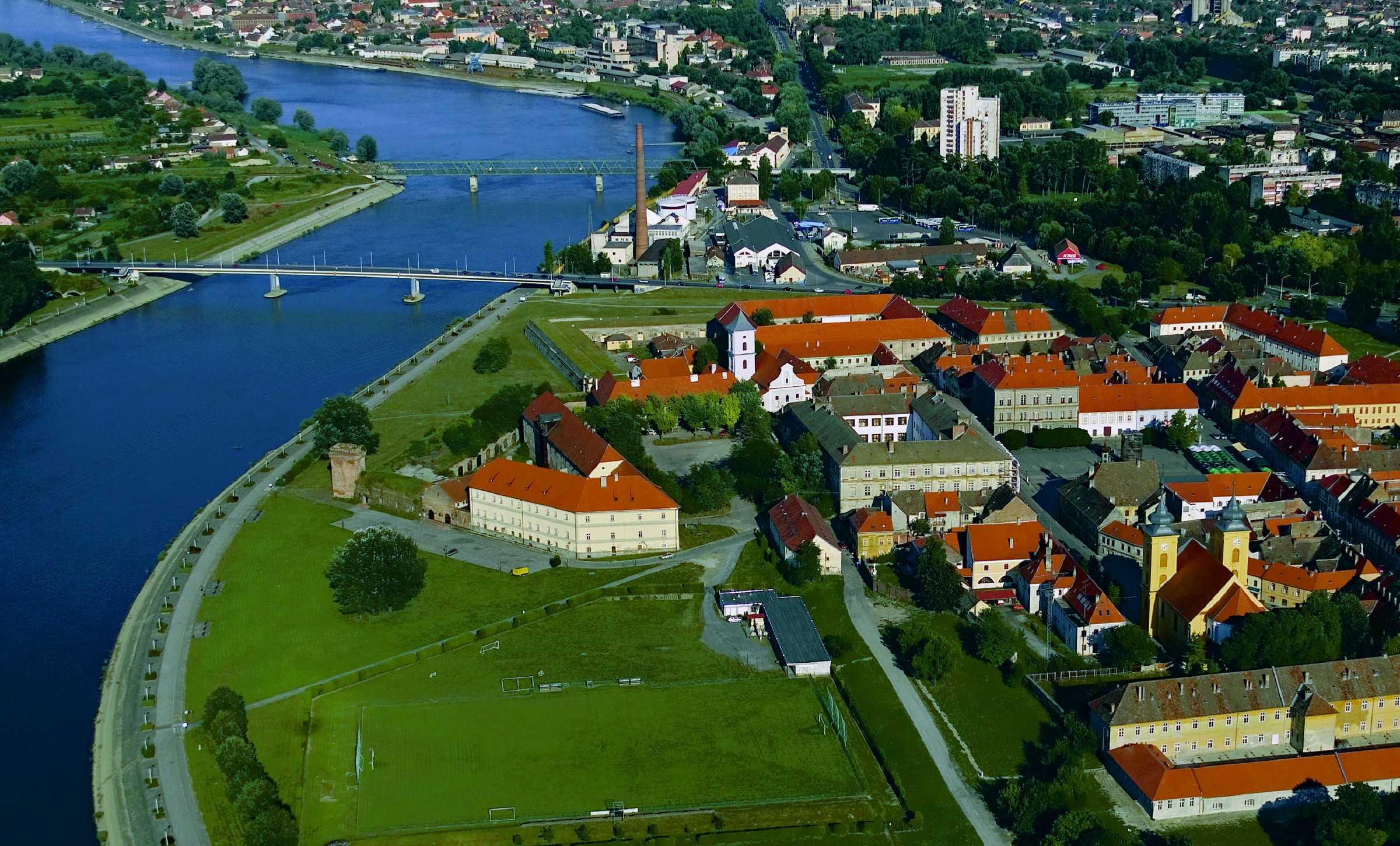 To those who really know and love Croatia, Osijek is simply unmissable. It is both the capital of and the doorway to Slavonia and Baranya and should be more accessible by continental Croatia trains. Sadly, international transportation links to the city by air are also quite poor. Improvements in accessibility to Slavonia and Baranya by rail and road are imminent © Romulić & Stojčić
To those who really know and love Croatia, Osijek is simply unmissable. It is both the capital of and the doorway to Slavonia and Baranya and should be more accessible by continental Croatia trains. Sadly, international transportation links to the city by air are also quite poor. Improvements in accessibility to Slavonia and Baranya by rail and road are imminent © Romulić & Stojčić
Unlocking the incredible potential of continental Croatia relies on getting the message out there and facilitating travel to these regions
In recent TCN features we have detailed that motorways within Croatia are among the best in Europe - once you're inside Croatia, travelling by car (or bus) between the regions couldn't be easier. We have also seen evidence of the huge interest in travelling here by rail and using continental Croatia trains.
Of all the modern methods of long-distance travel, rail is by far the most eco-friendly. What better way to begin an environmentally friendly holiday than by arriving on continental Croatia trains? When the country wisely decided to prioritise its internal motorway system, a modern and fast inter-regional rail network was put on the back burner. Nowhere suffers greater from this decision than continental Croatia.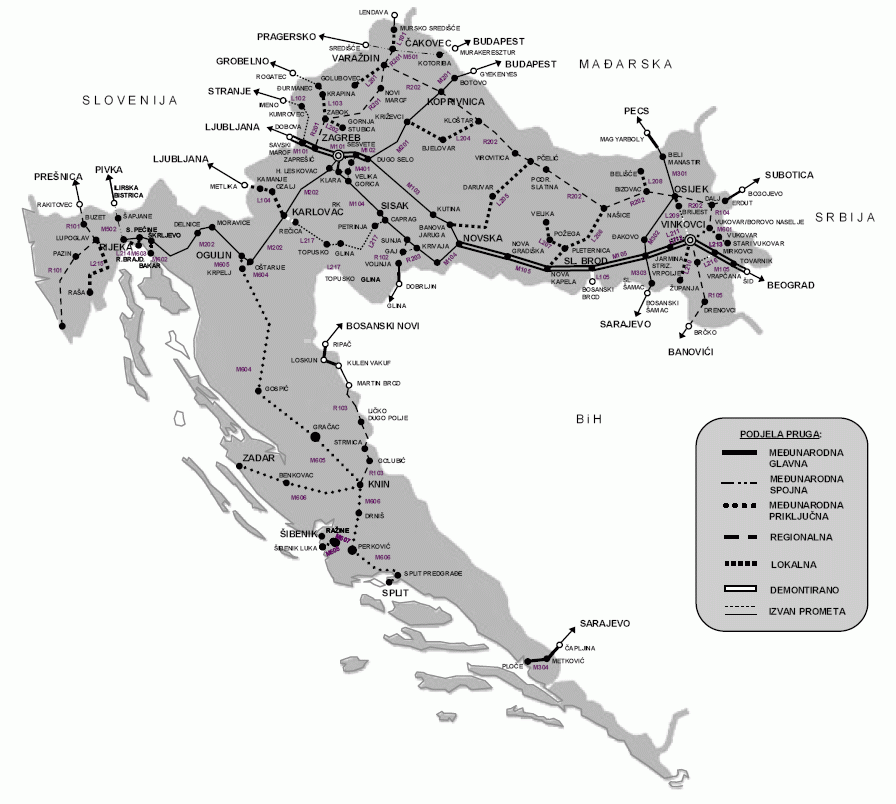 The Croatian rail network © Croatian Official Document uploaded to Wikipedia by Epepe
The Croatian rail network © Croatian Official Document uploaded to Wikipedia by Epepe
The only high-speed line that currently exists in Croatia links Rijeka to Budapest, via Zagreb and Koprivnica. Planned improvements hope to cut journey times between Zagreb and its nearest coastal city to an hour. Same as it ever was - Rijeka was the first Croatian city to be connected internationally by rail. That line also ran into the heart of Austro-Hungary and facilitated upper-class travel to places like Opatija. But does it best benefit the country to invest in more links to the coast or in continental Croatia trains? Well, the inland is not being ignored. Upgrades are being made to continental Croatia trains.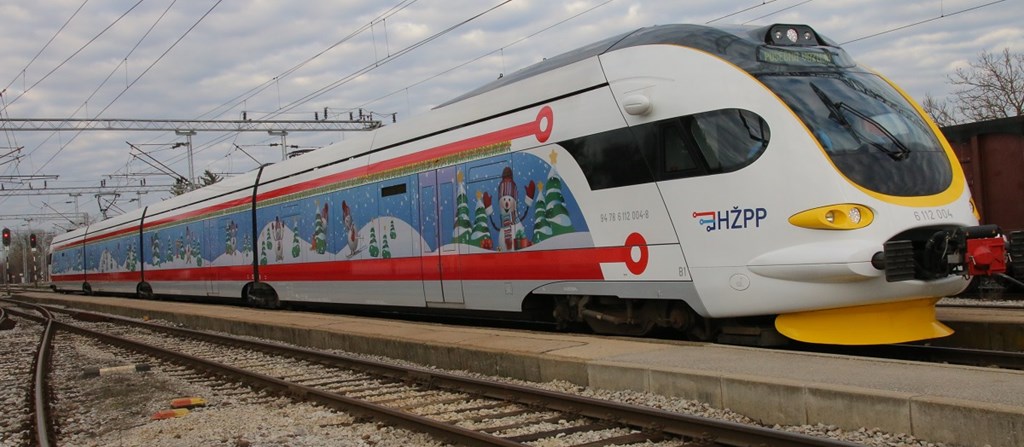 This impressive beast actually services the country's coast. But would more investment in the continental Croatia trains network better service more people and help unlock the inland to tourists? Around 70% of the country's inhabitants live in continental Croatia © HŽPP
This impressive beast actually services the country's coast. But would more investment in the continental Croatia trains network better service more people and help unlock the inland to tourists? Around 70% of the country's inhabitants live in continental Croatia © HŽPP
The rail link between Zagreb and Slavonski Brod is so historic that it was once part of the four routes of the Orient Express. It has been maintained to a standard where you can make a relatively quick journey from the capital to Vinkovci via Slavonski Brod. The same cannot be said for rail travel to Osijek, the access point to Baranya and much more. So slow is the connection between Osijek and Zagreb that it has been possible over recent times to reach the Slavonian capital quicker by taking the train to Vinkovci, then the bus to Osijek, rather than travelling direct by rail.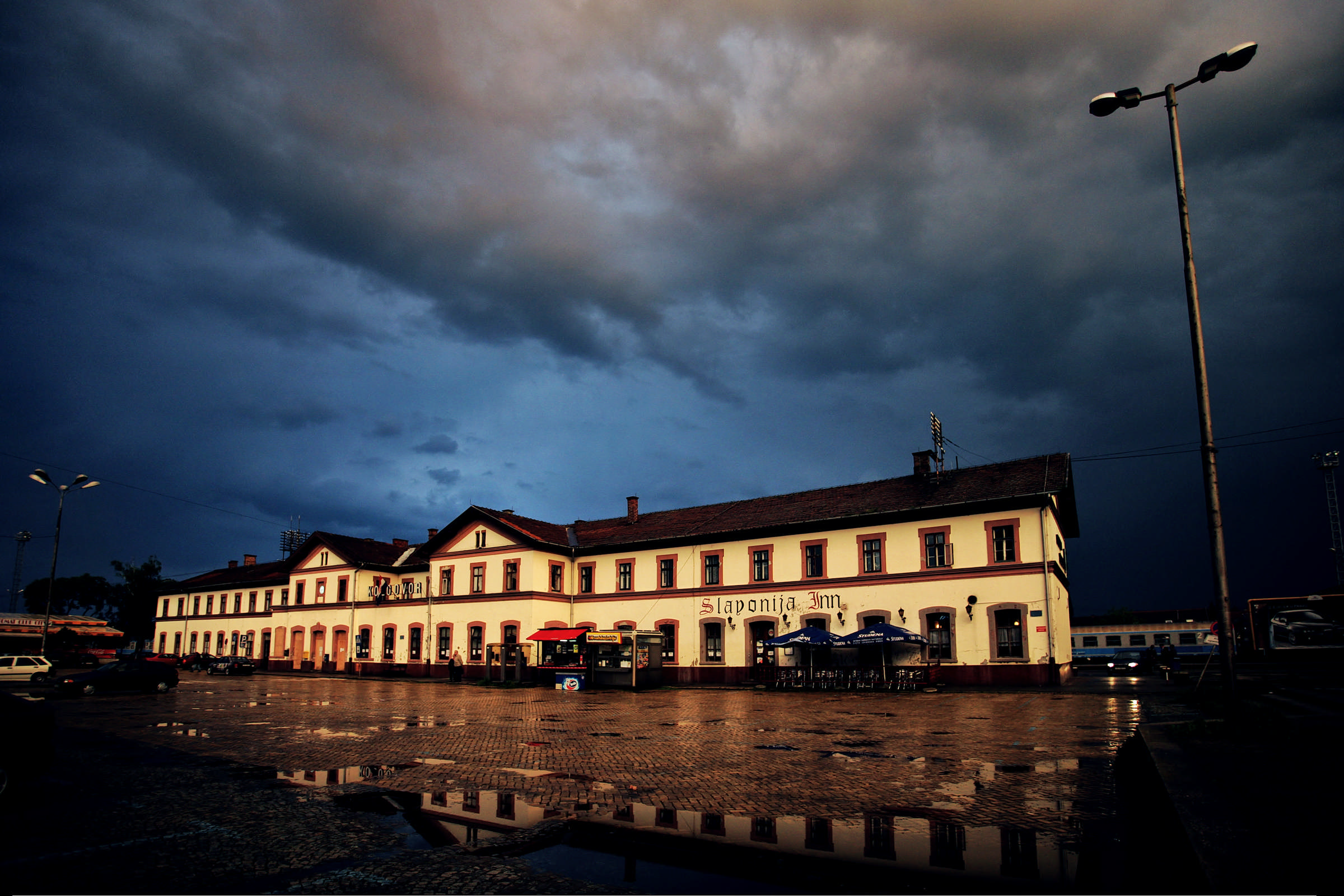 Osijek train station. A renovation to the building is planned for the near future © Romulić & Stojčić
Osijek train station. A renovation to the building is planned for the near future © Romulić & Stojčić
However, in February this year, Croatian Railways introduced four direct daily lines between Slavonski Brod and Osijek. And there will be a new tilting train line that will run between Zagreb to Osijek on Friday afternoon and from Osijek to Zagreb on Sunday afternoon, facilitating student travel. On October 15, the first low-floor train will run between Osijek and Vinkovci as an additional part of the renewal of their continental Croatia trains fleet in Slavonia. The welcome return of Croatia's second-oldest international rail line - linking Osijek to Pécs in Hungary, via Beli Manastir and Baranya - was introduced in late 2018.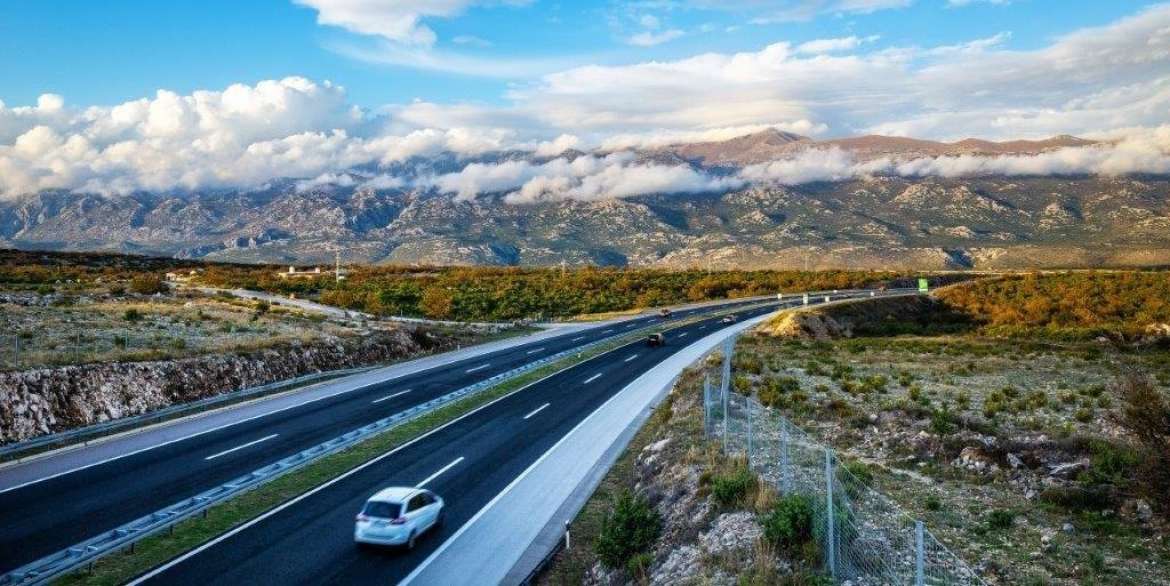 A motorway stretch between Metković and Dubrovnik, integrating the Pelješac bridge and the Croatian segment of the European corridor are the final big remaining projects in a three-decade-long undertaking to give Croatia one of the best motorway networks in Europe. Should Croatia's rail network be next? © Hrvatske Autoceste
A motorway stretch between Metković and Dubrovnik, integrating the Pelješac bridge and the Croatian segment of the European corridor are the final big remaining projects in a three-decade-long undertaking to give Croatia one of the best motorway networks in Europe. Should Croatia's rail network be next? © Hrvatske Autoceste
Access to Slavonia and Baranya will also be massively facilitated upon completion of the European corridor, which will connect North Europe to the Adriatic. Starting in Budapest, it necessitates the building of a bridge near Beli Manastir. Thereafter the motorway will pass by Osijek, connect to the Zagreb-Slavonia motorway near Lipovac, then pass through Bosnia and its capital Sarajevo and on to Ploče.
The removal of budget airline flights to the airport in Osijek remains a hindrance to attracting many international visitors to Slavonia and Baranya. However, with charter airlines facing the greatest uncertainty of all modes of transport at the current time, though their return is a must, it is perhaps now an ambition that should remain more long term. For the immediate future, improvements to rail travel look to be a brilliant way of opening up not only Slavonia, Baranya and Vukovar-Srijem, but also an eco-friendly access point capable of serving the whole of untapped continental Croatia.
For the latest travel info, bookmark our main travel info article, which is updated daily.
Read the Croatian Travel Update in your language - now available in 24 languages
HeadOnEast 2020 in Osijek as Hedonism Returns to Slavonia
October 1, 2020 - After its stunning introduction during Days of Croatian Tourism in 2019, HeadOnEast 2020 kicks off tomorrow - 3 glorious days of hedonism in Osijek.
One of the best tourism initiatives of 2019 - at least in my humble opinion - was the decision to hold the annual Days of Croatian Tourism event in eastern Croatia for the first time. The populr event, where all the movers and shakers from the official Croatian tourism industry converge for three days of awards, networking and socialising after a typically busy tourist season, is traditionally held in attractive coastal locations which make for an ideal weekend away from the office in Zagreb and elsewhere.
The decision to hold the event in Slavonia for the first time, following a campaign by Goran Rihelj of HRTurizam, gradually gathered support until a series of events from Virovitica to Vukovar, and Vinkovci to Osijek took place, with many official tourism workers heading on east for the first time. Having visited Slavonia several times, and aware of its most limited tourism development compared to decades of investment on the Adriatic, I was curious to see how the event would go. I have a large soft spot for eastern Croatia and the wonderful people who hail from there - easily the most hard-working employees you will find on the Adriatic each summer.
Slavonia shone. Absolutely shone, and many headed back to Zagreb truly amazed at what they had discovered out east. And there was no doubting the highlight of a fabulous few days - the HeadOnEast festival in the old town of Osijek. I was delighted to learn that the very clever branding to promote the region's outstanding gourmet offer was conceived and executed locally. HeadOnEast - Hedonist, genius! I do encourage you to learn more about this remarkable branding campaign in HeadOnEast, Quality Croatian Tourism Branding Made in Slavonia.
Nowhere was more attractive than the Tvrdja Old Town of Osijek, which was transformed into a gourmet paradise, with events, street food, wine tasting, chill zones, and fun for the kids. It was lit up like Christmas, and if I have ever seen an example of the official tourism slogan, Croatia Full of Life, this was it. Several of my Osijek friends were incredulous that the usually quiet old town in early October could be this vibrant and cool.
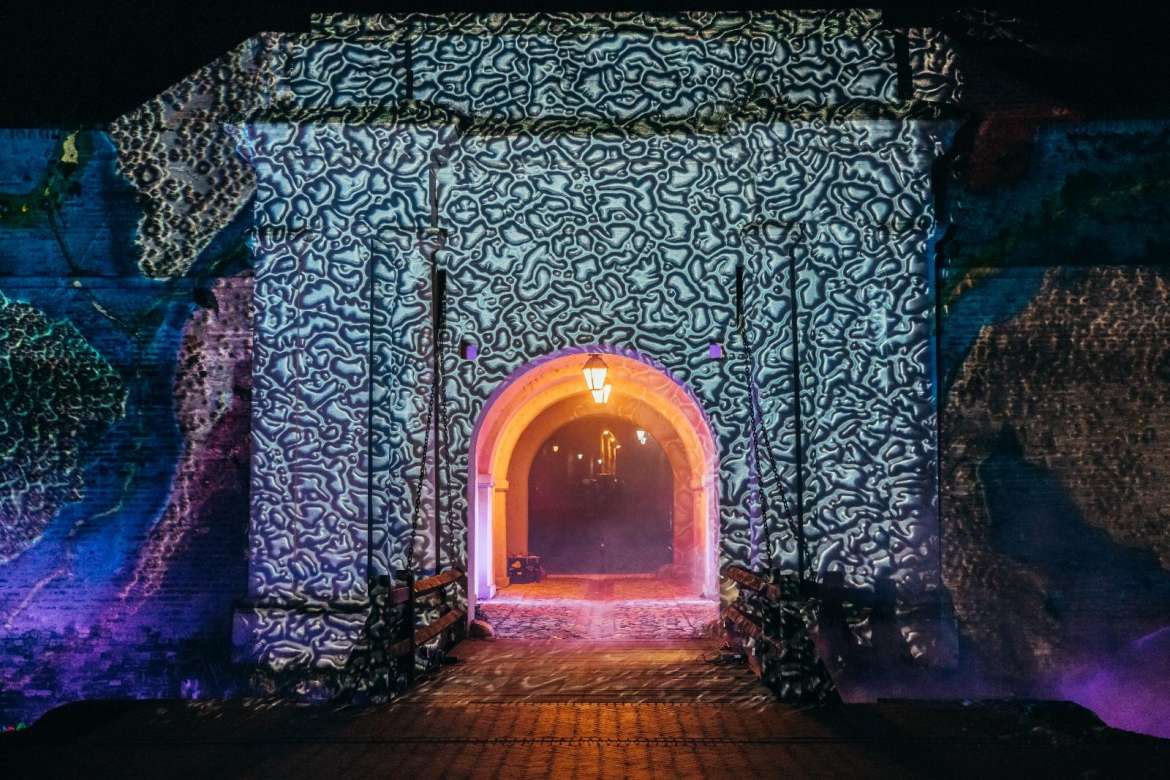
Osijek and Slavonia had put on quite a show for its 1,500 guests from all over Croatia.
And it wasn't long before I was back, bringing the family for a weekend of Slavonian discovery just two weeks later - it was quite a weekend.
Last year's magic was thankfully not a one-off, and HeadOnEast 2020 kicks off tomorrow evening, having survived the corona scare. Three days of gourmet fun await - check out the full programme in Croatian below (Google Translate is your friend).
If you think you have seen the old town of Osijek in all its glory, consider taking another look this weekend. HeadOnEast 2020 will be a fabulous event, one which I hope will be part of the calendar for years to come, helping raise the profile of this magnificent and severely underrated region.
PROGRAMI 2020.
“ZEMLJA BEZ GRANICA - HVATAČI SNOVA” - Trg Jurja Križanića - dvorište Prehrambeno tehnološkog fakulteta Osijek; iza Crkve Sv. Mihaela Arkanđela
Radno vrijeme:
Petak: 17.30 h - 24.00 h
Subota: 9.30 h - 24.00 h
Nedjelja: 10.00 h - 12.00 h
Opis: Ponajveći kontinentalni dječji festival Zemlja bez granica u mini izdanju gostuje na HeadOnEastu, pod temom Hvatači snova. Klince i klinceze te njihove odrasle pratnje očekuju brojne radionice i igraonice uz bogat glazbeni program. Program realizira Udruga Breza u suradnji s Kulturnim centrom Osijek.
Program:
Petak, 2.10. 17:30 Priča o Glasu- Kazalište Mala scena/ dječja predstava
18:00 Zvučna kupka /performans
18:05 Škripzikl uživo /ulični performans
19:00-19:30 Dora Vestić /koncertino
19:40-19:55 HNK/ crtice iz mjuzikla
20:10-21:00 JELENA RADAN I GORAN BOŠKOVIĆ /koncertino
21:00 do 24:00 Ambijentalna glazba uz svjetlosne instalacije
Subota, 3.10. Radionice za djecu
9:30-13:00 razne radionice
15:00-19:00 razne radionice
18:00 Ivana Đula: hvatačica zvukova – performans Dubrovnik s razlogom
19:30-20:15 LUCE- Još i sad/ mali koncert
20:15-21:00 MERITAS- Dok čekamo dan/ mali koncert
21:00 Udruga Slama i Plesni studio Shine - Spaljivanje virusa/ performans
21:00 do 24:00 Ambijentalna glazba uz svjetlosne instalacije
Nedjelja, 4.10. Radionice za djecu
10:00-12:00 razne radionice
Više informacija: https://www.facebook.com/events/2729133980697507/
“VINO.GRAD & BEERCUZ“ - Trg Vatroslava Lisinskog – dvorište Edukativnog i informativnog turističkog centra mladih Stara pekara
Radno vrijeme:
Petak: 18.00 h-24.00 h
Subota: 18.00 h–24.00 h
Nedjelja: ne radi
Opis: Stara pekara ugostiti će Vino.grad i Beercuz, te postati raj za vinoljupce i pivoljupce, gdje će sinergija podunavskih vina i craft piva potaknuti razuzdanost pred glavnom pozornicom ovogodišnjeg HeadOnEast-a, na kojoj će nastupati brojni poznati izvođači. (tradicionalni sadržaj Večeri vina i umjetnosti, ovaj put pod nazivom Vino.grad. Planirano je predstavljanje vina Slavonije i Baranje, glazbeni program, vinske i gourmet radionice. Uz Vino.grad u dvorištu Stare pekara, predstavit će se županijska craft scena u programu pod nazivom Beercuz.)
Glazbeni program:
Petak, 2.10. 18:00 - 19:00 DJ Kemalier
19:00 - 20:00 Bow vs. Plectrum
20:00 - 21:00 DJ Kemalier
21:00 - 22:30 ZDENKA KOVAČIČEK & Green house blues band
22:30 - 24:00 DJ Kemalier
Subota, 3.10. 18:00 - 20:30 DJ Kemalier
20:30 - 21:40 Borna Šercar's Jazziana Croatia
21:40 - 22:30 DJ Kemalier
22:30 - 24:00 Gitarel
Dodatni program:
Petak, 2.10. 18:00 – 22:00 h Izložba fotografija „Živjeti s Dravom“, JU za zaštitu prirode OBŽ
19:00 – 20:00 h Vina s Dunava, radionica - Centar za mlade Stara pekara
Subota, 3.10. 18:00 – 22:00 h Izložba fotografija „Živjeti s Dravom“, JU za zaštitu prirode OBŽ
19:00 – 20:30 h Vina s Dunava, radionica i Gourmet radionica, sljubljivanje vina i hrane - Centar za mlade Stara pekara
“IN DA SOFA” - Trg Vatroslava Lisinskog – travnati prostor ispred NK Elektra
Radno vrijeme:
Petak: 18.00 h - 24.00 h
Subota: 18.00 h - 24.00 h
Nedjelja: ne radi
Opis: Jedan od zaštitnih znakova osječke urbane scene, popularna In da Sofa priprema pregršt ludih ritmova i veliku dozu zabave.
Glazbeni program: DJ Omer (petak) & DJ Flegma (subota)
- “FOOD BAZZAR” - Trg Vatroslava Lisinskog
Radno vrijeme:
Petak: 18.00 h - 24.00 h
Subota: 18.00 h - 24.00 h
Nedjelja: ne radi
Opis: Food bazzar okupiti će slavonske i baranjske proizvođače kulena, kobasica, čvaraka, sira, meda, ajvara, pekmeza, rakije i drugih proizvoda koji predstavljaju najbolje suvenire ovog kraja,
- “Street Food” - Ul. Matije Petra Katančića
Radno vrijeme:
Petak: 18.00 h - 24.00 h
Subota: 18.00 h - 24.00 h
Nedjelja: ne radi
Opis: Street Food zona ponuditi najbolje od raznolike gastronomske ponude Slavonije i Baranje.
Dodatno:
- Posebno turističko vođenje „Vojnici, gostionice i bludnice“, Stanislav Subotić
Petak i subota: 18:00 – 19:30 h, početak Trg V. Lisinskog
- Program će pratiti skulpture od slame autora Nikole Fallera.
Manifestacija će imati službene ulaze:
1 ulaz na program Hvatači snova, Zemlja bez granica:
dvorište Prehrambeno tehnološkog fakulteta - Trg Jurja Križanića, iza Crkve Sv. Mihaela Arkanđela
3 ulaza prema ostalim programima – Vino.grad, Beercuz, In Da Sofa, Food bazzar, Street food:
- ulaz: Trg Svetog Trojsta – ulaz u Ulicu M. P. Katančića
- 2. ulaz: Trg Vatroslava Lisinskog – zapadna strana trga
- 3. ulaz: s Promenade – kod NK Elektra)
Na ulazima će se osigurati dezinfekcijska sredstva, mjeriti temperatura i popisivati posjetitelji, dok će se na svakoj lokaciji planiranih potprograma biti osigurana dezinfekcijska sredstva te će se voditi računa o distanci i maksimalnom broju posjetitelja po pojedinoj lokaciji, prema uputama i preporukama Stožera i Hrvatskog zavoda za javno zdravstvo.
Even if you can't make the festival this time round, why not HeadOnEast soon and see what you are missing. Learn more in How to Make the Most from a Weekend in Eastern Croatia.
Follow the latest on the official HeadOnEast Facebook event page.
Mushroom Festival of Slavonia and Moslavina to Be Held in Lonjsko Polje
September 25, 2020 – When we think of the richness of Slavonia and Moslavina, our first associations are usually winemaking and agriculture. However, these two Croatian regions hide many benefits, and one of them is mushroom growing.
Apart from truffle hunting in Istria, the Croatian regions of Slavonia and Moslavina also hide a rich above and underground mushroom world. Yes, truffles can also be found in Slavonian forests, but the truffle business has not yet come to life in Slavonia as it has in Istria.
Nonetheless, for the last five years, Mushroom Festivals have been held in Lonjsko Polje Nature Park showing various mushroom species of the Slavonia and Moslavina regions. This year's edition of the Mushroom Festival will take its place this weekend, September 26 and 27, at the Repušnica Visitor Center in the village of the same name near Kutina.
This event is conceived as a combination of science (mycology, enology, sommelier), environmental protection, culture, health, sports, and recreation, because you're out in nature when looking for mushrooms, and they carry medicinal properties.
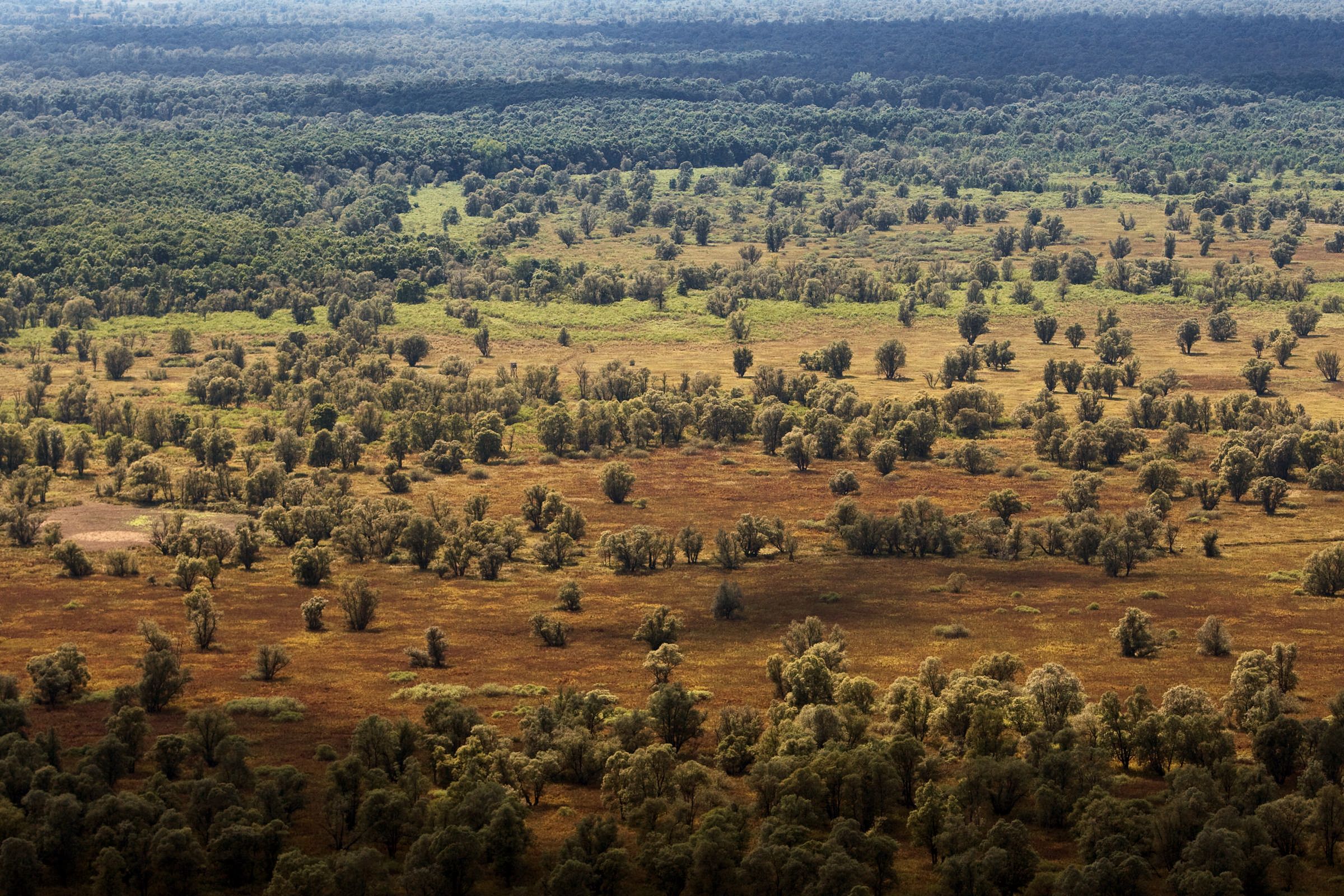
The Lonjsko Polje Nature Park / Romulić and Stojčić
Wide offer at the Mushroom Festival
Festival visitors can expect a large exhibition of mushrooms and educational content about the biological diversity of Lonjsko Polje Nature Park, and the importance of its preservation.
Mushrooms are also important for the gastronomic offer and are an integral part of various menus, especially vegetarian menus where they are one of the most important ingredients, which is why visitors will be able to enjoy the catering offer of specialties with mushrooms.
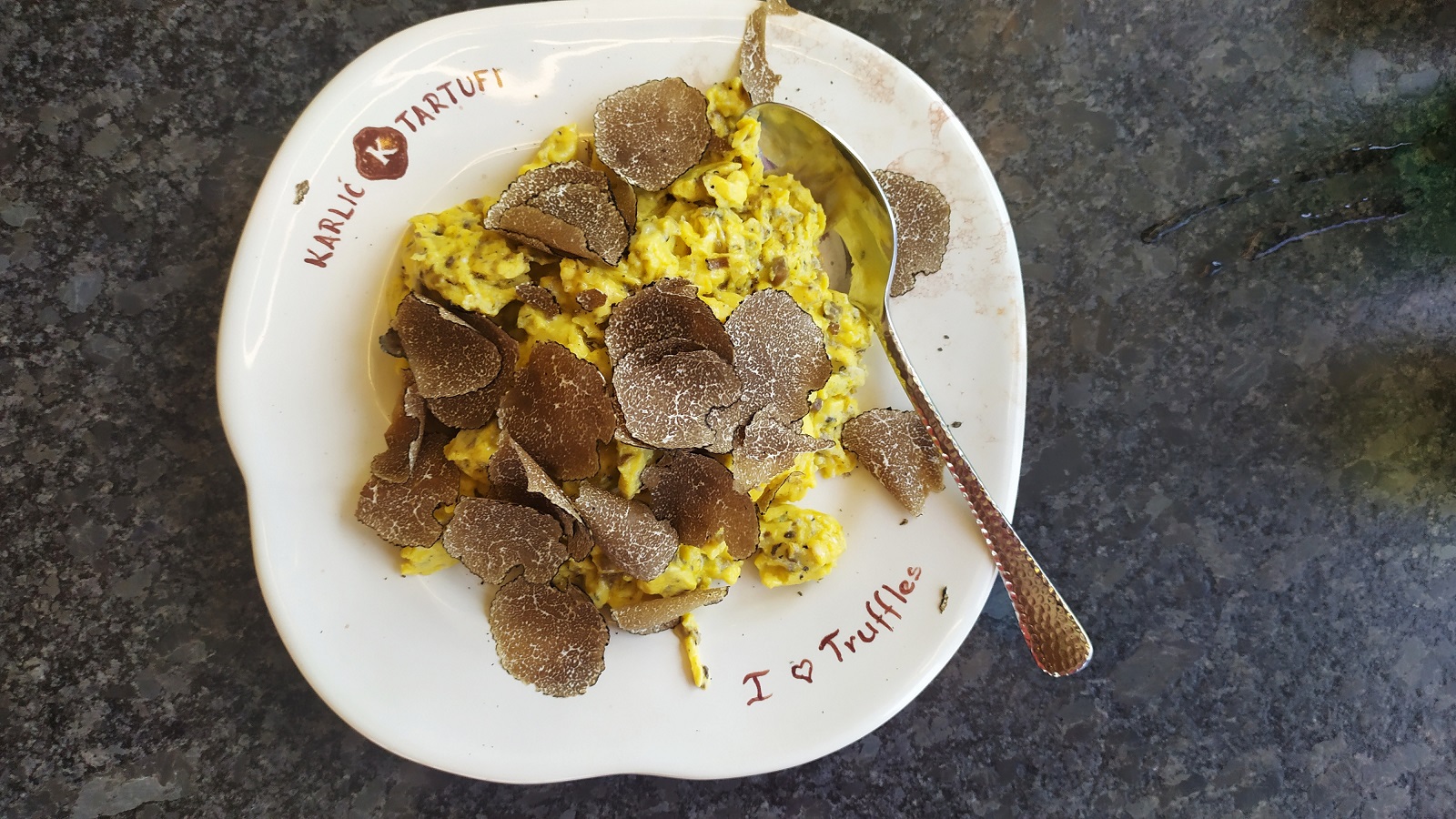
One of the rares and most delicious underground mushrooms are for sure - truffles. Authentic Istrian specialty with truffles shown on the picture are scrambled eggs ("fritaja s tartufima") / Donatella Pauković
That the popularity of this festival is recognized outside the Sisak-Moslavina County is proved by the fact that visitors from Moslavina come from the Zagreb County, since Repušnica village is only an hour away by car from Zagreb, near the town of Kutina.
For visitors to get familiar with the mushroom world of Slavonia and Moslavina, every mushroom will be exhibited and marked with cards with the Croatian and scientific names, the label of edibleness, and possible medicinal characteristics.
Mushroom empire in Croatia
The originator of the idea of the Mushroom Festival and the founder of the Center for Mushroom Research "Russula" in Novska, Matija Josipović, has been studying thousands of mushrooms in Croatia for decades and is the author of as many as 8 books on the topic of mushrooms.
In his books, Josipović for the first time presented and described some types of mushrooms that can be found in Croatia, and through his work, he emphasizes the importance of mushrooms for nature.

Screenshot HRT
Josipović also wants to find mushrooms that have not yet been found in Croatia and explore what no one else has.
"Everything in nature tries to tell us something, but sometimes we humans don't listen," Josipović said in an interview with HRT, adding that mushrooms protect trees, and thus everything on Earth. The kingdom of mushroom is, therefore, according to new scientific research, as important as the flora and fauna.
"The latest systematization of all life on Earth consists of the plant world, the animal world, and the mushroom world as a separate world," Josipović explains the importance of mushrooms.
Rich mushroom characteristics
In his book simply called "Mushrooms" (“Gljive”), Josipović also dealt with the healing characteristics of each of them.
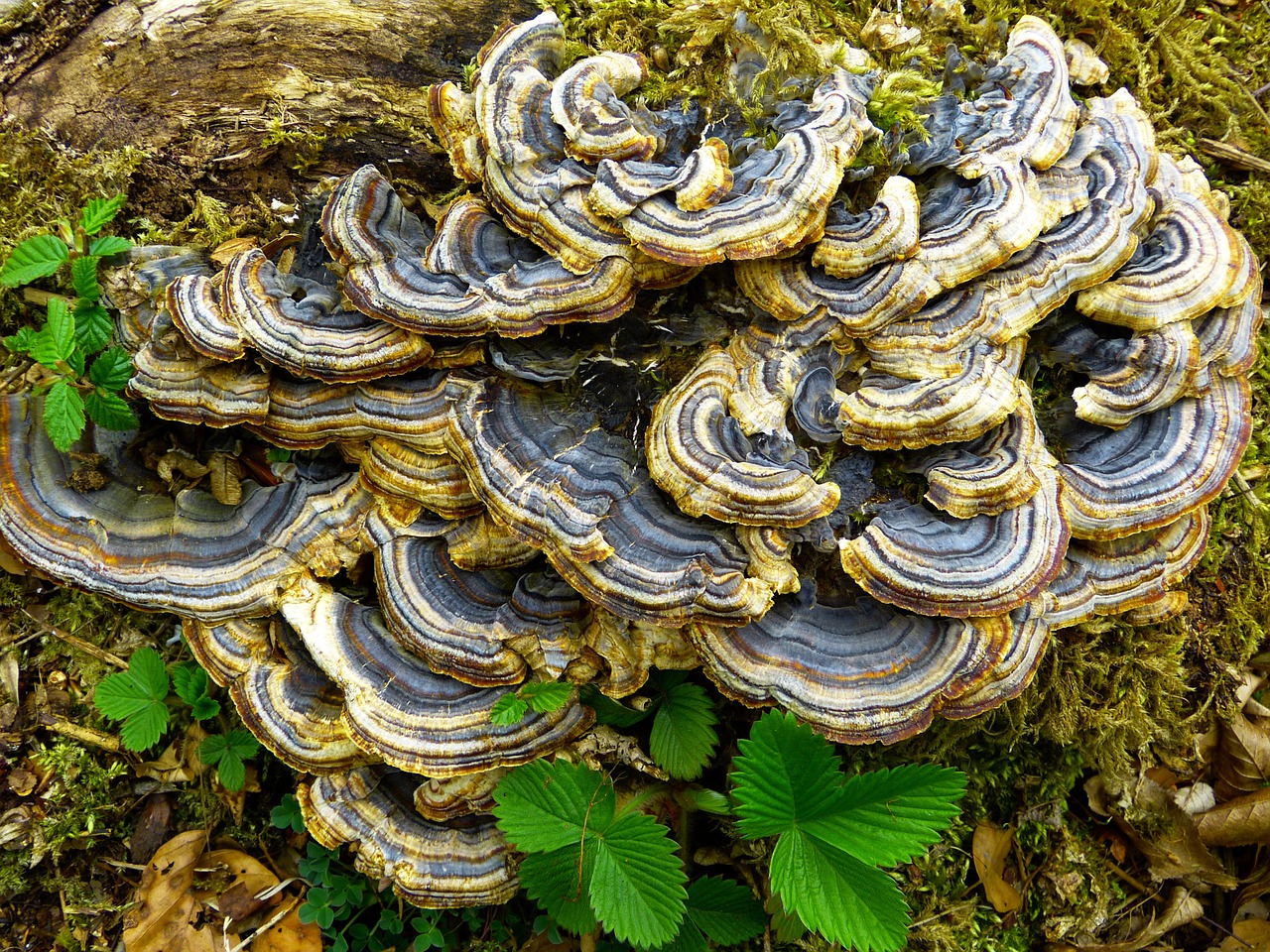
Mushroom Trametes versicolor has many medicinal benefits and can be found in Slavonian forests / Pixabay
In a forest around Novska, which is full of mushrooms, Josip found the so-called turkey tail ("puranov rep") mushroom (lat. Trametes versicolor), known in Japan as a cure that reduces mortality in certain types of cancer by 4 to 8 percent and slows the growth of cancer cells by up to 63 percent.
"I hope that such cures will soon be recognized in Europe as well," says Josipović.
In addition to healing characteristics, it is important to know which mushrooms are top quality, which are edible, and which are not tasty, but the most important thing is to know how to recognize poisonous or deadly mushrooms.
There’s never enough caution with mushrooms, so it is important to study books and learn from more experienced mushroom growers before harvesting. Also, mushroom festivals like these in Lonjsko Polje help in educating about these important and interesting forest creatures which are not lacking in Croatia.
The program of the Mushroom Festival runs from 9 am to 6 pm on Saturday, and from 10 am to 3 pm on Sunday.

Mushrooms in nature / Pixabay
For the latest travel info, bookmark our main travel info article, which is updated daily.
Read the Croatian Travel Update in your language - now available in 24 languages
How to Invite People to Rakija and 19 More Must-Visit Things in Osijek
September 24, 2020 - The biggest town in the heart of Slavonia, we present 20 must-visit things in Osijek.
A city where storks live on city buildings, red wounds on facades reminiscent of days of courage, and street art testifies to the city’s past and present rhythm. As Punkufer reports, whether you are a fan of wineries and vineyards, old castles and forts, or you want to enjoy the romantic combination of the Drava and the Danube in the middle of golden and green plains, Osijek is the place for you.
1. The famous Osijek Fortress
The fortified part of the town from the 18th century, you'll find St. Trinity's statue. There is also the General Command Building, which you've seen elsewhere even if you have not been to Osijek - on the 200 kn banknote, which also has the floor plan of the old fortress.
At the time of its construction, it was one of the largest and most modern military fortifications in Central Europe. To this day, only a small part of the old walls has been preserved. It is believed that the body of General von Beckers, who led the construction of the wall, is in the walls of the Fortress. But there are more intriguing legends and beliefs…
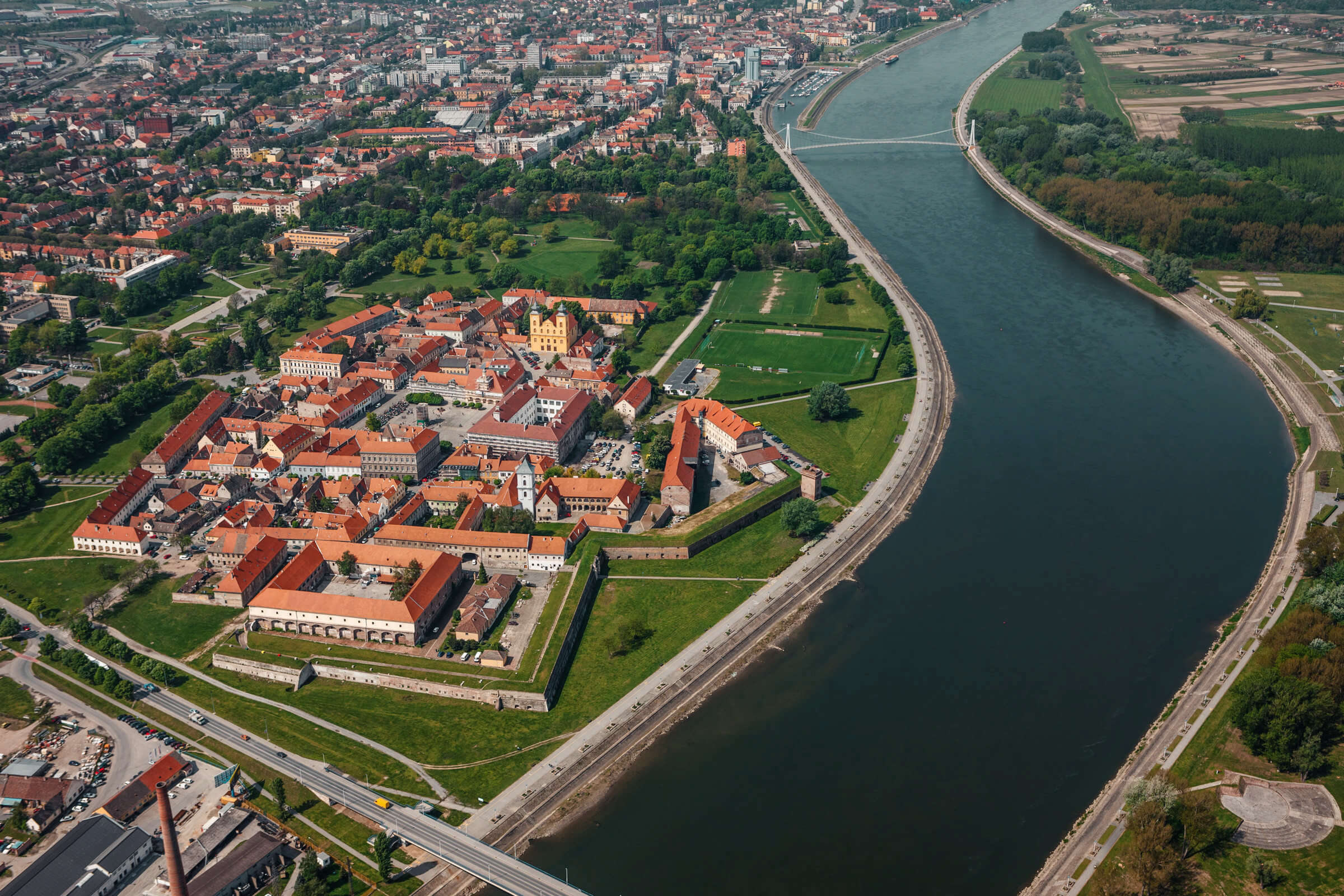
Osijek | Photo by Romulic and Stojcic
2. City of legends
The legend of the missing treasure: when Napoleon was ravaging Europe, the treasury of the Habsburg Empire was transferred on ships among the safe walls of the Osijek Fortress. After the danger passed, the treasury was returned, but one chest disappeared forever in Osijek, and it was never known where the money was.
Legend of noon lunch: when the Turkish army left the city in 1687, churches marked the period of freedom with bells at 11 am, and Osijek housewives eventually concluded that this was the ideal time to make dumplings that would be ready at noon. Hence the name "dumpling clock", but also dumplings on your table at noon.
The legend of Romeo and Juliet in Osijek: cops in ancient times caught a young man in the wee hours of the night and accused him of crime nearby. To save the reputation of his sweetheart with whom he spent the night, he confessed to a crime he did not commit. When she found out, she ran to the rescue to admit what had happened; however - the young man had already been hanged. The remainder of this event today is the Chapel of the Stone Cross, or as the people once call it - the Chapel of Unhappy Loves.
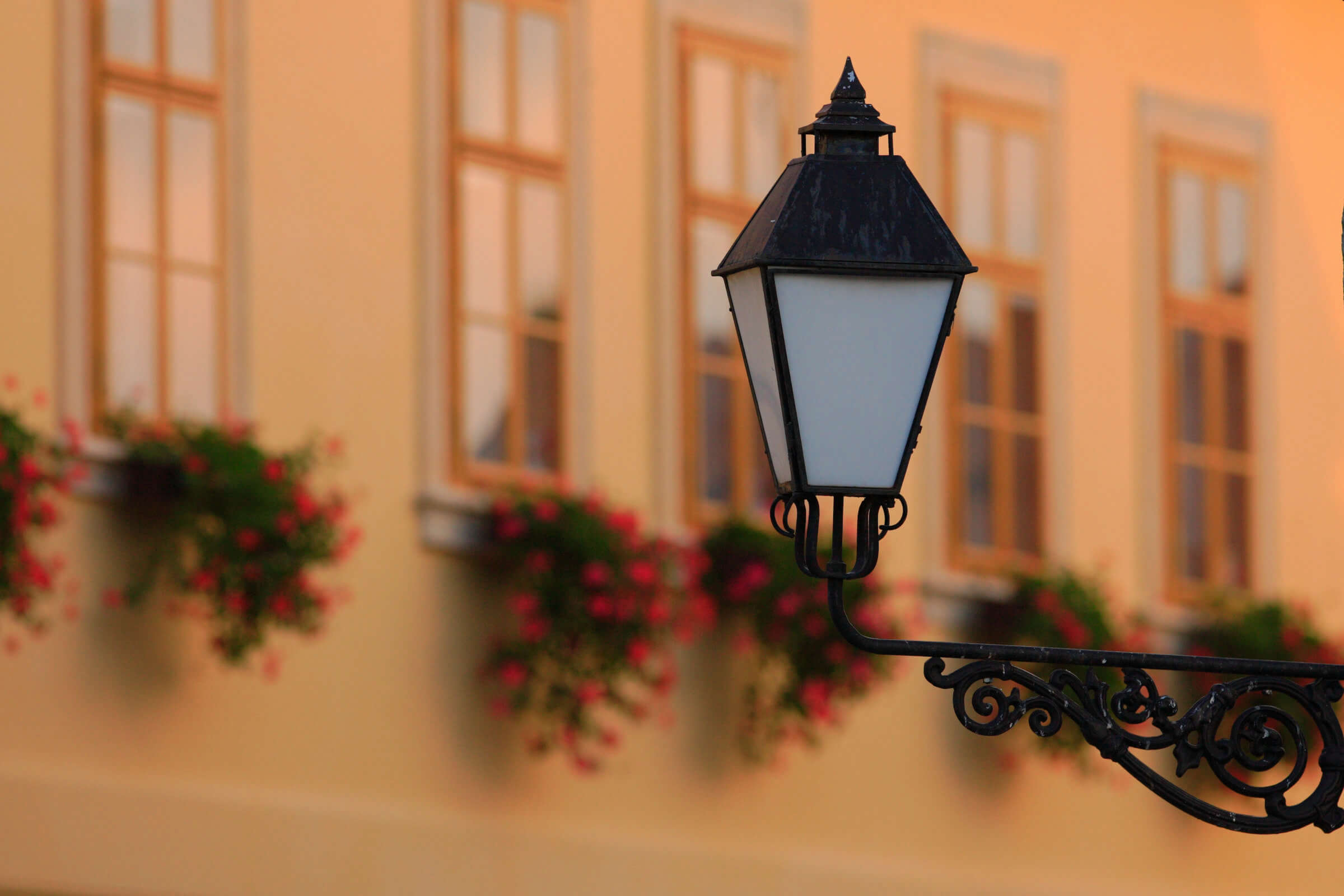
Osijek | Photo by Romulic and Stojcic
3. Soldiers, inns, and prostitutes
At the end of the summer, the Tourist Board of the City of Osijek organized free tourist tours of the Fortress called "Fortress: soldiers, inns and prostitutes" (only for adults!). The perfect opportunity to meet the naughty side of Osijek.
The tours are led by a friendly tourist guide Stanislav Subotic, who welcomed his guests disguised as a resident of the Lower Town, whom the woman reported to the police that he had not returned from the prostitute for six weeks. The Museum of Slavonia and young historians from the Faculty of Philosophy in Osijek also helped him prepare the tour. At the moment, they no longer have free tours, but those interested in a thematic tour can contact the Osijek Tourist Board and Mr. Subotić, who will surely enhance their experience of the city.
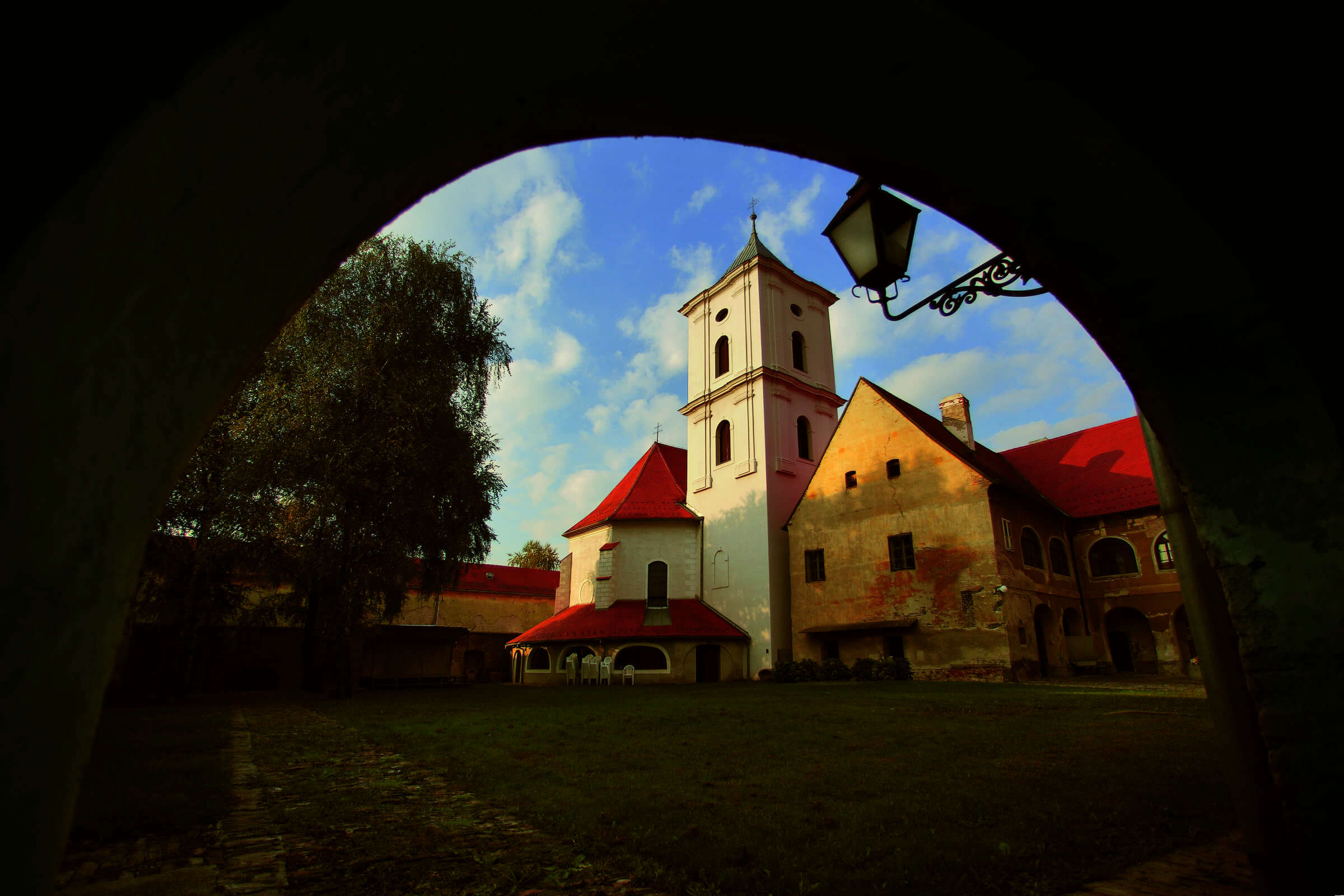
Osijek | Photo by Romulic and Stojcic
4. Osijek is one of the greenest cities in Croatia, and sphinxes guard the entrance to a park
Large parks and gardens, especially those around the fortress's ramparts, were built on the principle of ‘pleasant and useful’ to keep the city away from cannons from the city walls. During your visit to Osijek, you can enjoy the greenery of the park of King Tomislav, the gardens of Croatian kings, or the young Park of the newlyweds, where young married couples once planted the trees of their love.
One of the more unusual parks is Sakuntala Park. It was named after a girl from Indian mythology who was sung by Indian poets and Goethe. The park is adorned with sphinxes at the entrance, and when you see them, you’ll remember why we warned you: Their eyes are up!
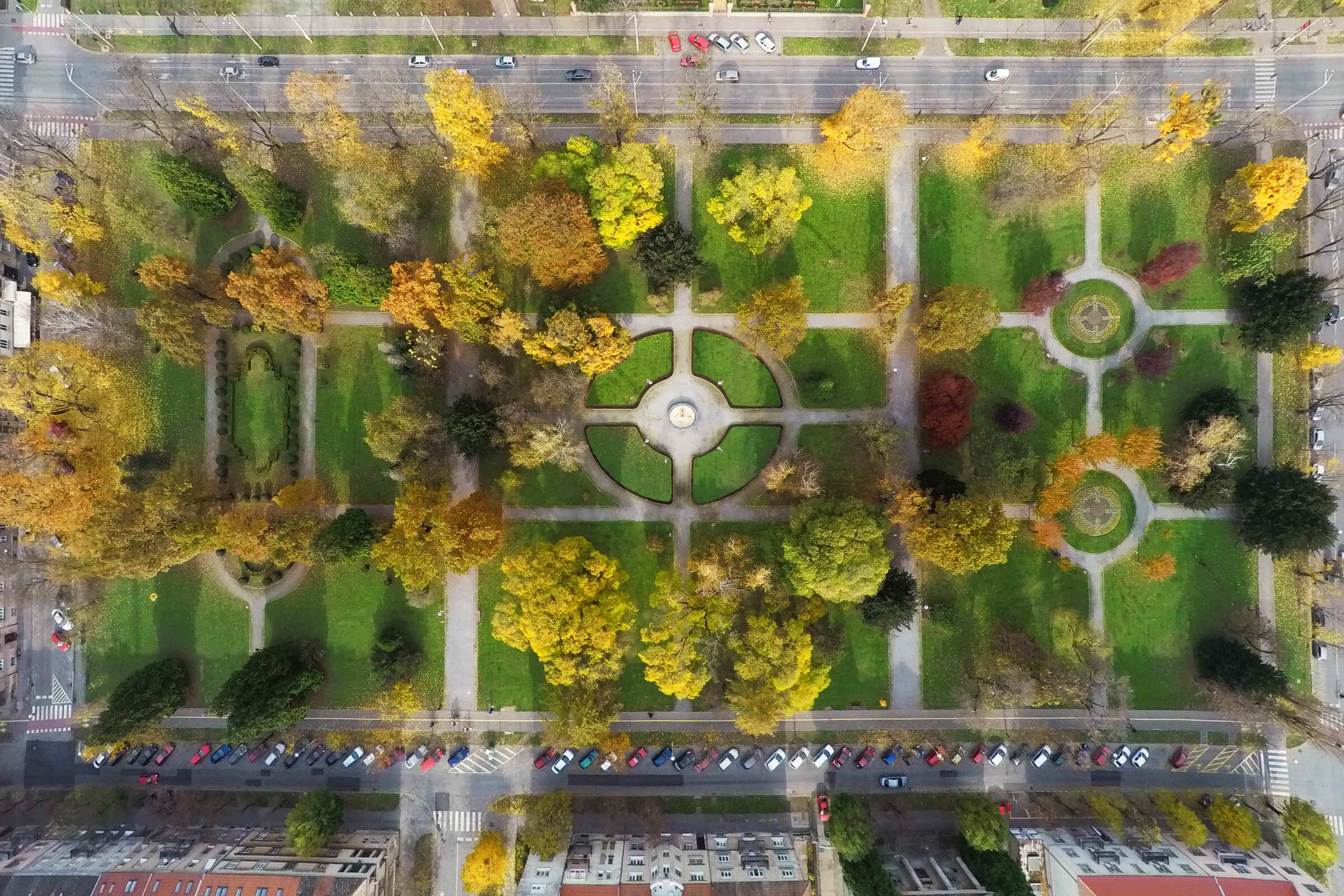
Osijek | Photo by Romulic and Stojcic
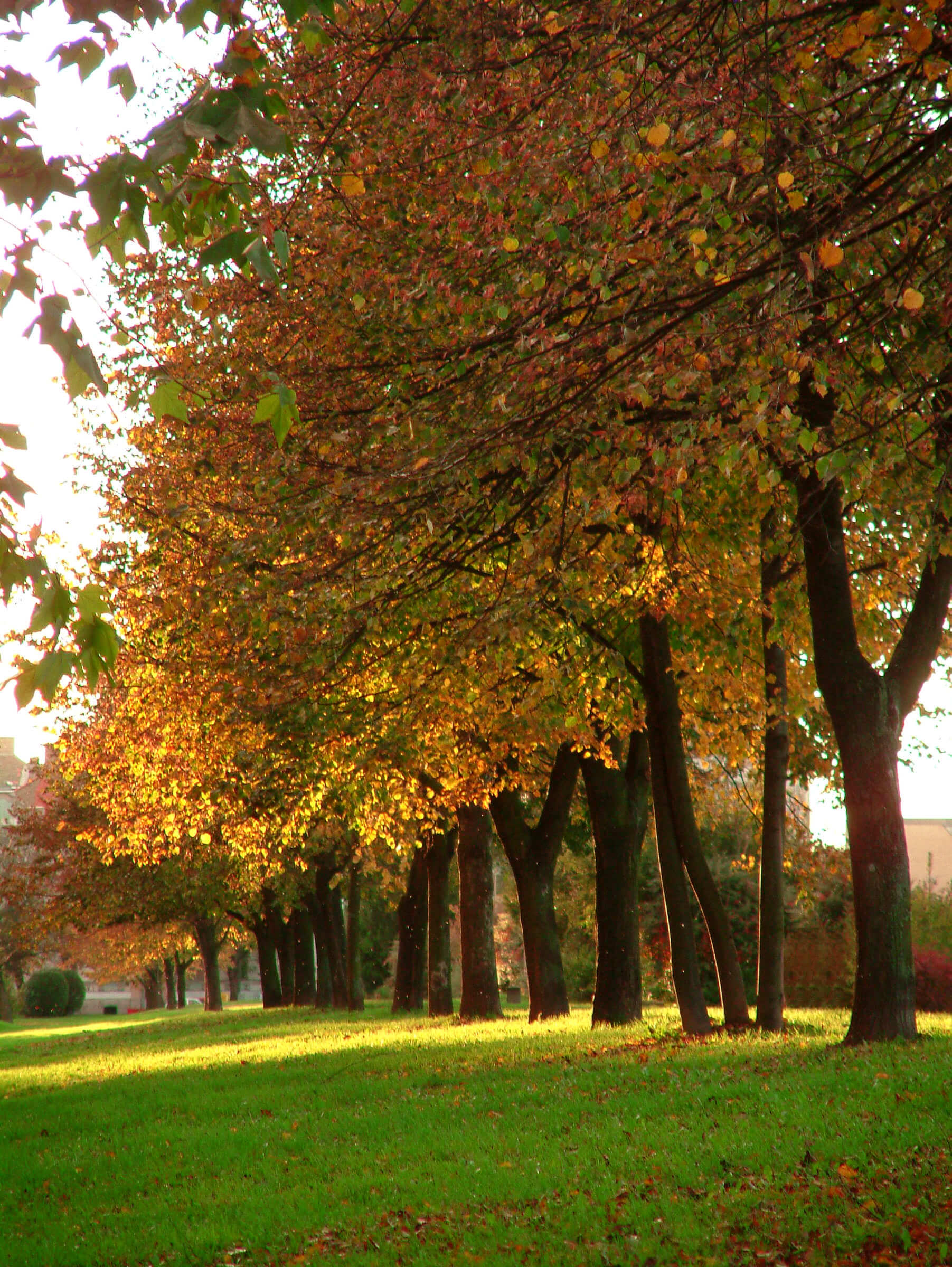
Osijek | Photo by Romulic and Stojcic
5. "Kompa" (Friend), tireless scaffolding on the Drava
For a hundred years, Kompa has been tirelessly transporting passengers from one bank of the Drava to another, often when they intend to visit the Osijek ZOO on the other side. This is why many people remember their childhood when they sailed on a trip with their parents.
This ecological boat uses only the Drava River's currents for driving, but don't worry, so as not to end up in a panoramic tour of Slavonia and Srijem on the Danube, your comp holds a steel rope. Of course, you always have the option to eLEGAntly* cross the Drava River over the Pedestrian Bridge (Bridge of Youth).
*Lega is a name for a friend, a colleague, in the spirit of the Osijek dialect.
6. Copacabana Beach or locally - Kopika
To refresh in the summer months, locals and guests alike prefer to look for in public baths and swimming pools. The largest and most visited Drava beach is called Copacabana. With a thorough and systematic reconstruction, there is a recreation center that will soon shine in a new edition.
It is ideal for walking along the Drava Promenade along the Drava, where there is enough space for walking, cycling, or enjoying the view on a bench or with a cup of coffee in one of the "river" cafes.
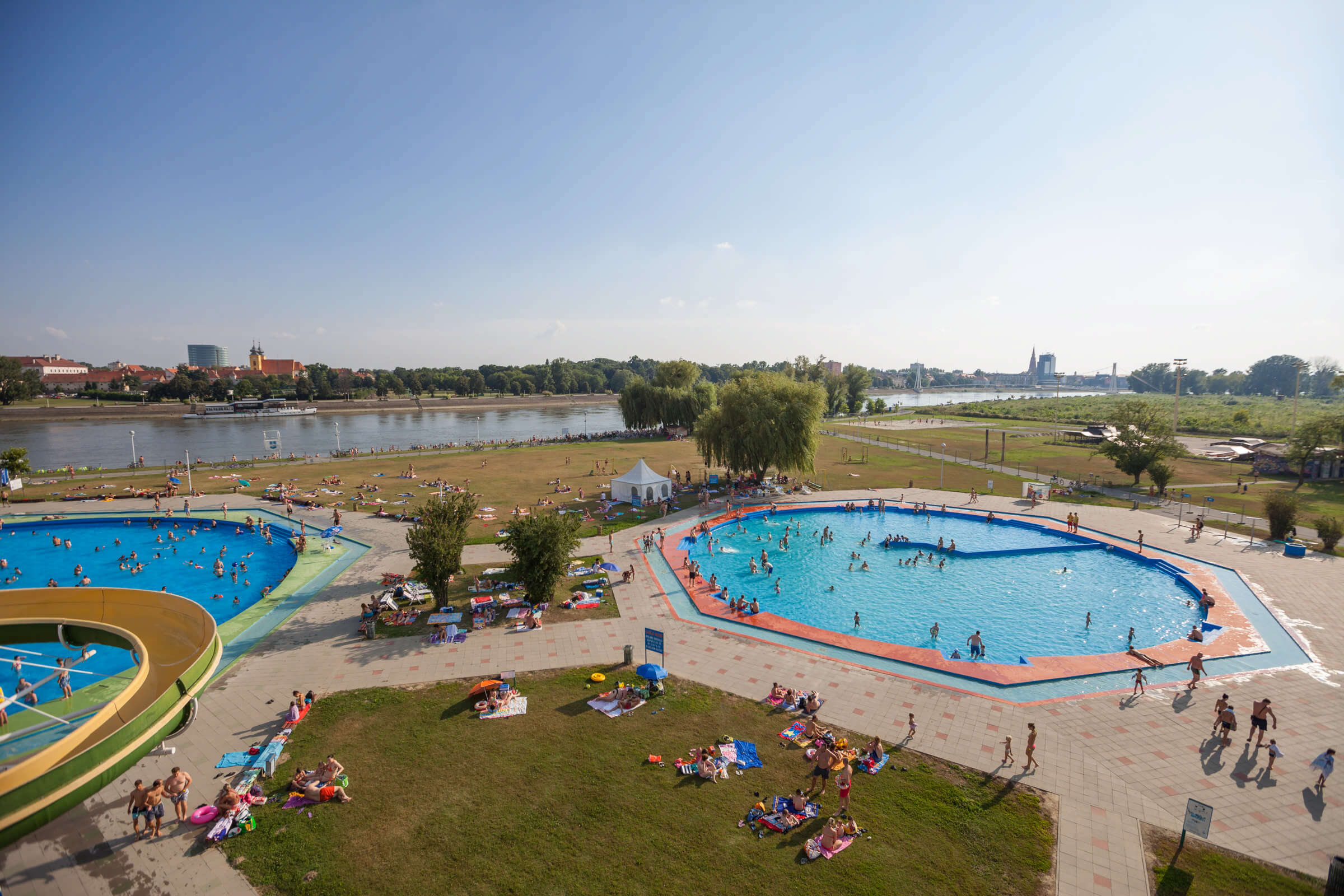
Osijek | Photo by Romulic and Stojcic
7. Slavonian cuisine to protect against winter
Fresh cheese with kajmak, Kulen, fried bacon, meatballs, fish stew, river specialties of carp and catfish, shepherd's pie, Sataraš, cabbage flakes, plum dumplings, jam, chocolate from Osijek factory Kandit… Need we say more? With all that, you can refresh yourself with a homemade invention: a black Radler. After all, they say that Osijek is still the birthplace of the first Croatian beer. And for wine lovers, there is the best from the famous wine cellars of Slavonia and Baranja: Pinot, Chardonnay, Merlot, Grasevina…
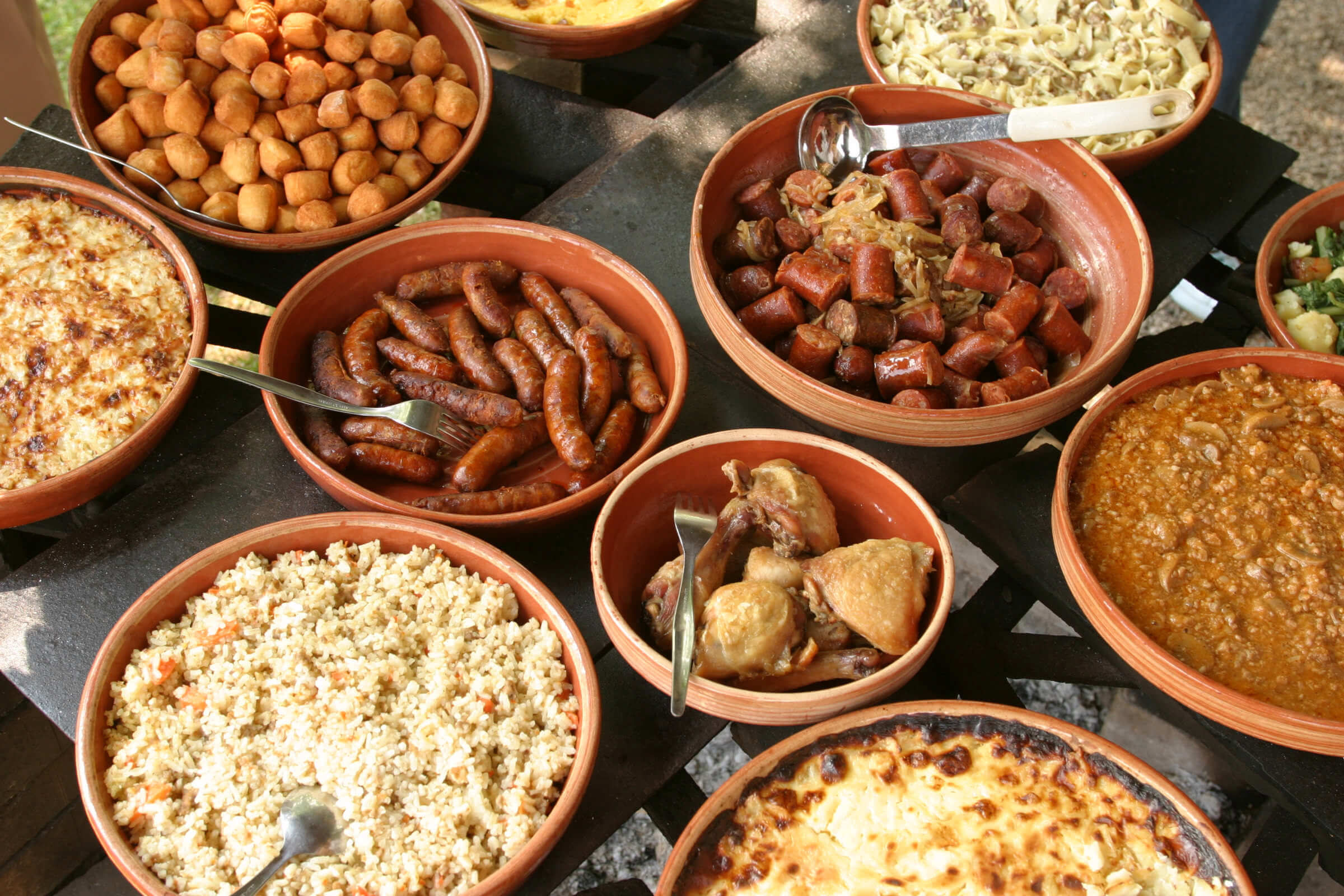
Osijek | Photo by Romulic and Stojcic
8. Mother of cats
Here is a temple for all crazy cat people: the famous baroness and humanitarian Pauline Hermann statue would not attract so much attention if cats did not keep her company. Namely, the baroness was a great lover of animals, especially cats, so the people of Osijek immortalized her with a statue and a nickname: Cat Mother.
9. The egg from which Osijek hatched
On Ban Jelačić Square, there is a statue of a cracked egg, which symbolizes Osijek's birthplace. It is a memorial to the ancient Roman city named Mursa, located here from the 1st to the 5th century AD.
10. Mill - mill on the Drava
There used to be many mills on the Drava, and having a mill on the Drava meant serious work. Although the mills ceased to operate during the Second World War, in honor of the old days and the respectable occupation of millers, the project "Miller's Way" was launched, which included a replica of the mill intended public education.
11. The main square, a group of citizens and a mysterious elephant
On the main, Ante Starčević Square, a "group of citizens" embodies all the inhabitants of Osijek in their diversity. But there is also a touch of exoticism in the form of an elephant statue on the building's front. There are several versions of why the elephant is in the square. One story says that it was set up by an Osijek merchant who probably wanted to attract customers from the far eastern regions or learned from those parts that an elephant brings good luck. Another says that while the circus was passing through the city, an old elephant at the head of the procession fell to the ground and died. Two brothers of a butcher from a nearby butcher shop "took care" of the body, and from that moment on, the purchase of meat in that butcher shop was called "I'm going to the elephant".
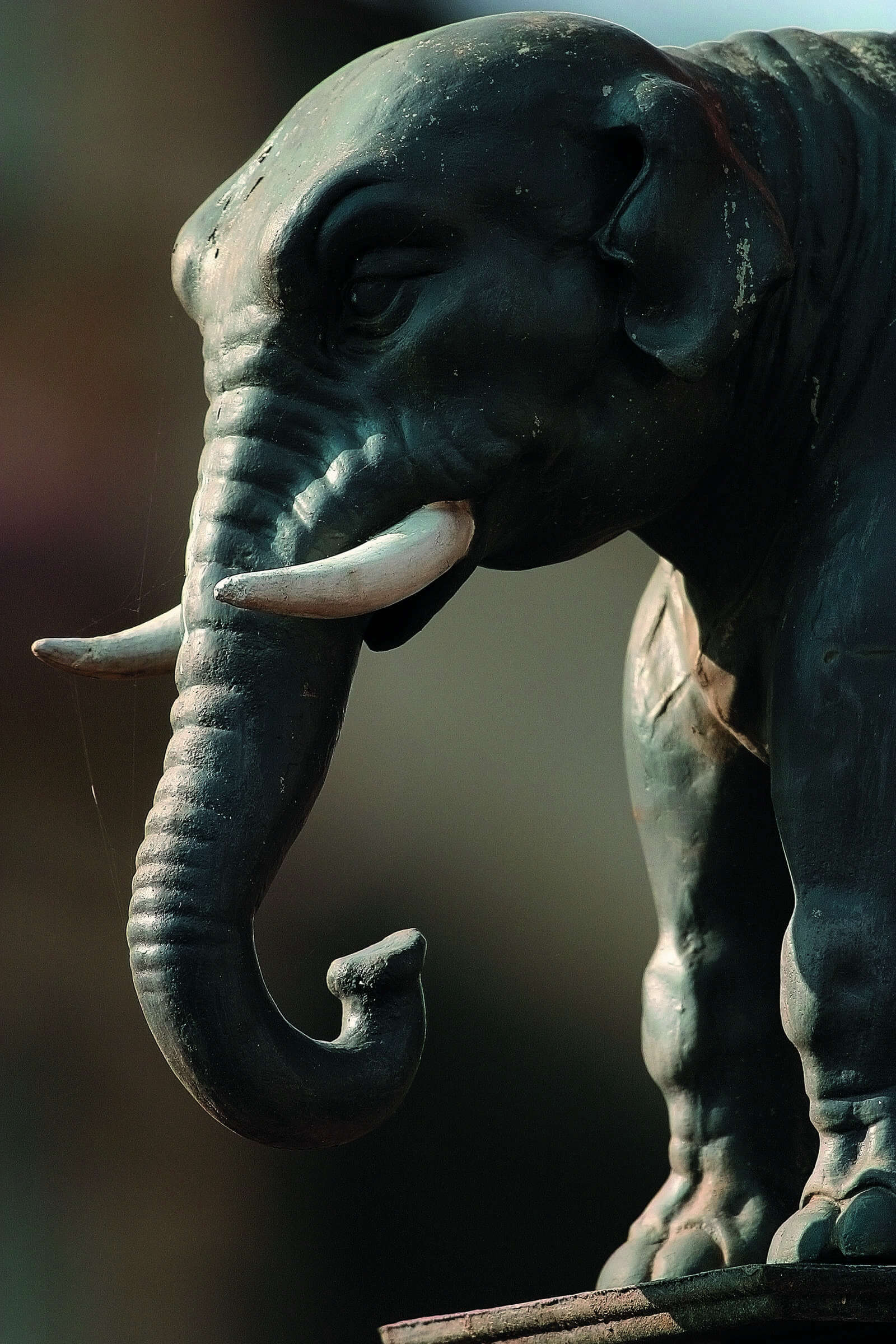
Osijek | Photo by Romulic and Stojcic
12. City of Art Nouveau
At the beginning of the 20th century, Osijek was the stage of European architecture trends, and the Art Nouveau left the most beautiful trace. If you walk along European Avenue, you will have the opportunity to see magnificent examples of urban villas from that time. Still, there are other buildings such as the Main Post Office, Urania Cinema, and the so-called Knopp houses built in the style of "Gingerbread Art Nouveau".
Pride in heritage is also expressed through various projects and festivals. Culture lovers strive to revive and nurture the artistic direction that has made up the city through tourist tours, lectures, concerts, exhibitions, and workshops.
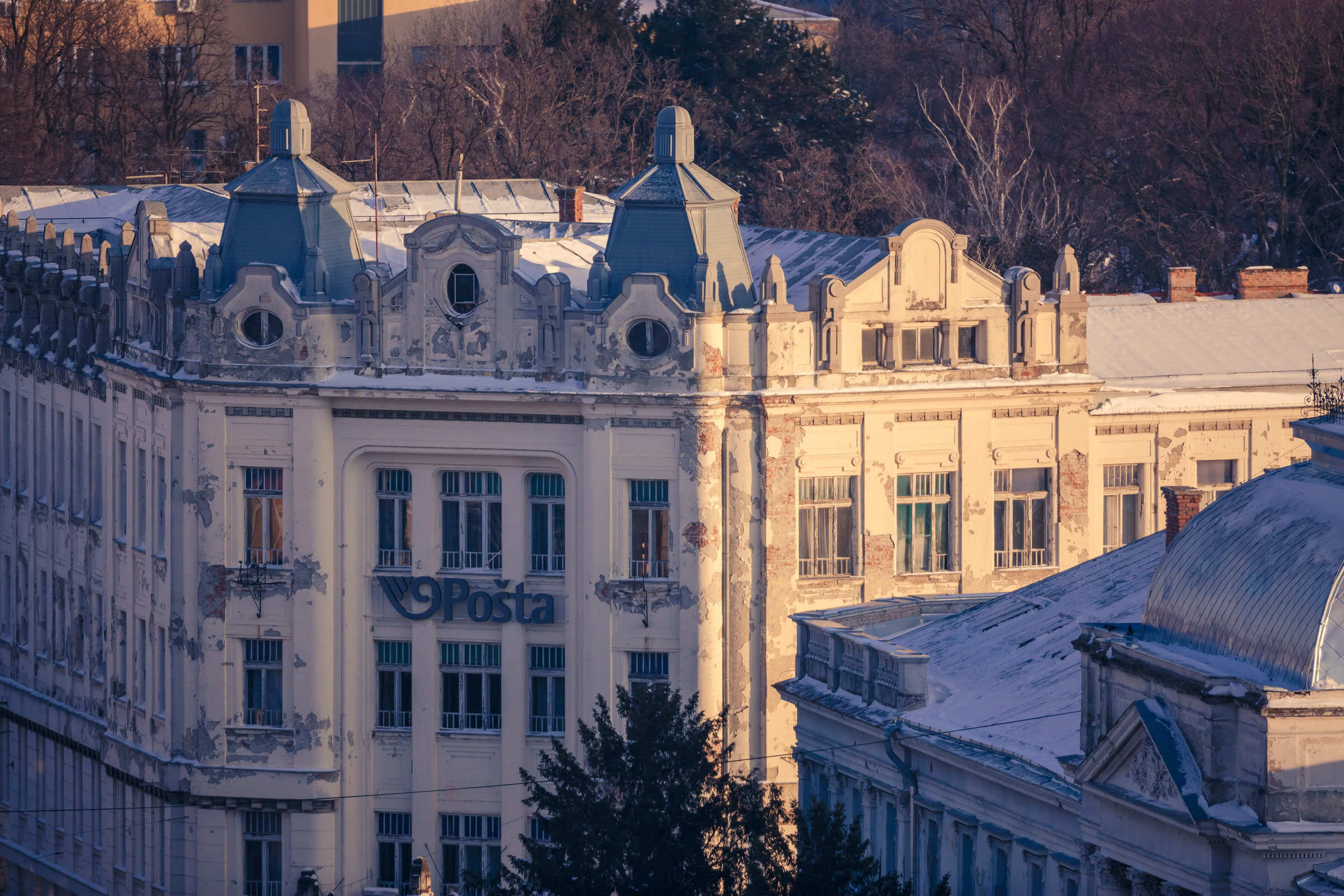
Osijek | Photo by Romulic and Stojcic
13. Watch the film in the cinema in the city of Oscar winner Branko Lustig
The well-known Croatian producer and actor who won an Oscar for his films, Schindler's List and Gladiator, is a native of Osijek. Because of his Jewish blood, as a child, he was imprisoned in a concentration camp. He later attributed his survival to the camp to an officer from the Osijek area, just like him, and knew about his father. In the name of domestic cinema, visit Osijek's Urania Cinema. The cinema building was erected in - you guessed it - Art Nouveau style. Even if you don't get to Osijek, you can bring a little Osijek spirit into your stay with the famous Osijek Oscar winner's film classics.
14. Cannonball - an attraction that no one planned
On Županijska Street, in addition to the HNK building and the County Palace, a skilled eye will notice a small attraction stuck in the wall: a black ball believed to have been accidentally fired from the Fortress in the 19th century. Since this happened in peacetime, it is believed that the cannonball fired was an unfortunate consequence of the military cannon game after a merry evening in the city.
15. Čaruga, a Slavonian bandit or Robin Hood?
At the beginning of the 20th century, the robber Čaruga gladly came to Osijek. Numerous legends depict his hard life and plundering exploits. By teaming up with other bandits, he became part of the so-called "Kola gorskih tića". Together, they plundered wealthier citizens. He was sentenced to death by hanging and said goodbye theatrically to life with the words "Goodbye people, Čaruga is traveling!". For some, Robin Hood, for some an ordinary robber, but indeed an interesting figure whose life decades later intrigued historians and artists. He was buried in the Osijek cemetery of St. Ana, and several books have been written about his character, and several films have been made.
16. Revive your childhood with Jagoda Truhelka
Most grew up with Osijek writer Jagoda Truhelka and her collection of short stories, "Zlatni Danci". She talks about his family and the people of Osijek's everyday life, so this could be one of the most beautiful guides before visiting Osijek. Part of her family's legacy is kept in the Museum of Slavonia in Osijek.
17. With a small, red Fico car against tanks - a monument to the courage of the little ones
When the tanks took to the city streets in 1991, Osijek defender Branko Breškić decided to stop them by parking his Fićo in the middle of the intersection. The tank crushed him mercilessly, but the scene remained eternal: like David and Goliath, the little red Fico remained a symbol of courage and resistance to a stronger enemy. Today, this scene is immortalized in an art installation in which Fićo won in the end. Its location is at the intersection of Trpimirova and Vukovarska.
18. Urban monument: Unconquered city
After the occupation of nearby Vukovar during the Homeland War, the message of the late defender Predrag Sušac appeared in Osijek: Osijek - an unconquered city! Today, this legendary inscription is protected as a cultural asset, and you can see it at the intersection of Trpimirova and Divaltova streets.
19. Stadium Gradski vrt and Kohort of the city on the Drava
"There is an echo from the east, the champion's name is Osijek" - so sing the fans of NK Osijek, Kohorta. They took their name from the name for the infantry part of the Roman army's legion, which is not without reason because members of the Roman cohorts were once stationed in this city. Home games are held at the City Garden Stadium, from which many probably already know the inscription Grad na Dravi (the City on Drava River). There are also city swimming pools near the stadium, although we are sure that they won't be needed as long as Osijek has Copacabana. At least until winter.
20. Museum of Slavonia
The Museum of Slavonia is one of the oldest museums and the largest general museum in Croatia. Through many collections from the fields of archeology, ethnography, art, history, etc., thousands of objects have been preserved. The native collection of Essekians focused on the history of Osijek and its cultural and social development, stands out. Through Osijek's stories, we can often come across the term Esseker and the Esseker dialect when we talk about language. It is an old Osijek-German dialect that is now extinct. But the term Esseker in a speech today is also a symbolic term for Osijek's people, especially those who are strongly attached to the city.
Come to Osijek and say 'Kum, af a deci rakouci''. Apparently, it should bring you a rakija. Fingers crossed!
For the latest travel info, bookmark our main travel info article, which is updated daily.
Read the Croatian Travel Update in your language - now available in 24 languages
Join the Total Croatia Travel INFO Viber community.
PHOTOS: Five Amazing New Murals Vukovar Street Art 2020
Sunday, 6 September 2020 – The Vukovar street art 2020 event VukovArt has just finished. Here are the five fantastic new works its left in the colourful Slavonian town.
The paints have dried, the scaffolding has been removed and all but the last few organisers have set off home. But, though VukovArt, the annual Vukovar street art 2020 has finished, the paintings from this year will remain.
These wonderful new works join a spectacular series of paintings which decorate the town, thanks to previous editions of VukovArt (you can check them ALL out on this link). Residents of the town now live their everyday lives among these incredible pieces of public art.
Here's a look at the Vukovar street art 2020 collection and a little from some of the artists who've made them.
OKO (Croatia)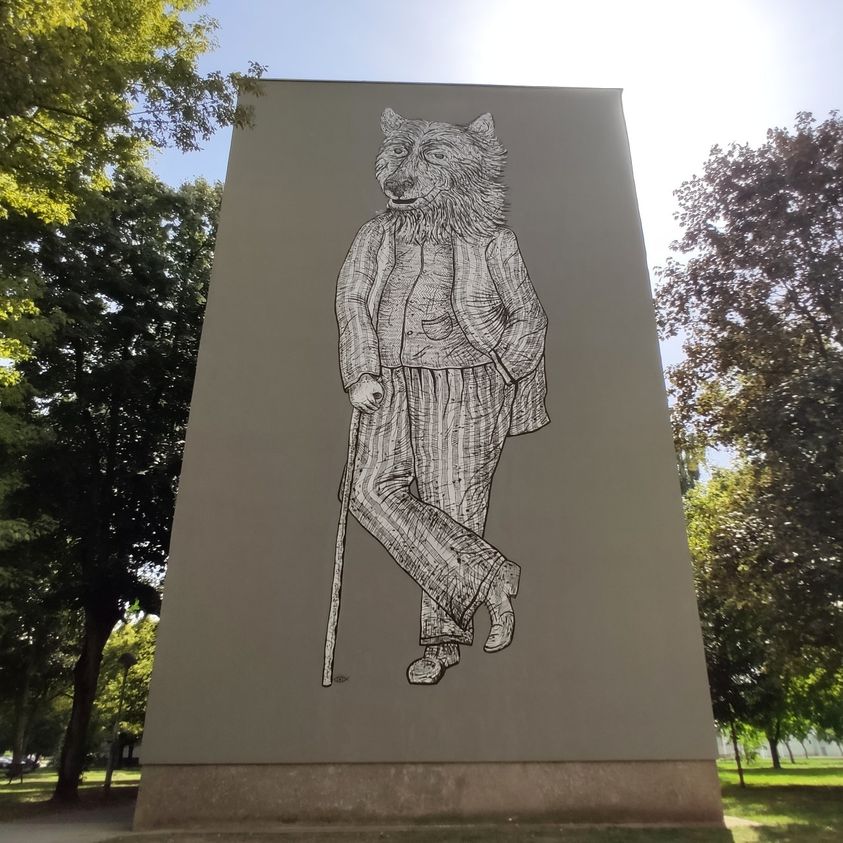
Because he’s Mister Strength, Courage and Health
Human bodies, dressed in Victorian finery, topped with the heads of animals and, especially, birds; OKO's intricate and sometimes sinister designs have been seen at Zagreb’s Museum of Contemporary Art, Victoria and Albert Museum in London, the European Parliament in Brussels and in more proletarian spaces such as Zagreb’s Medika club and Theatre &TD. Her murals are often similar, only produced on an industrial scale.
"I chose to paint a bear because this animal often symbolises amazing strength and endurance," OKO told TCN. "When they invited me to paint in Vukovar it seemed like best possible symbolism for a city that endured so much and yet which still stands strong.
Boogie (Germany / Switzerland)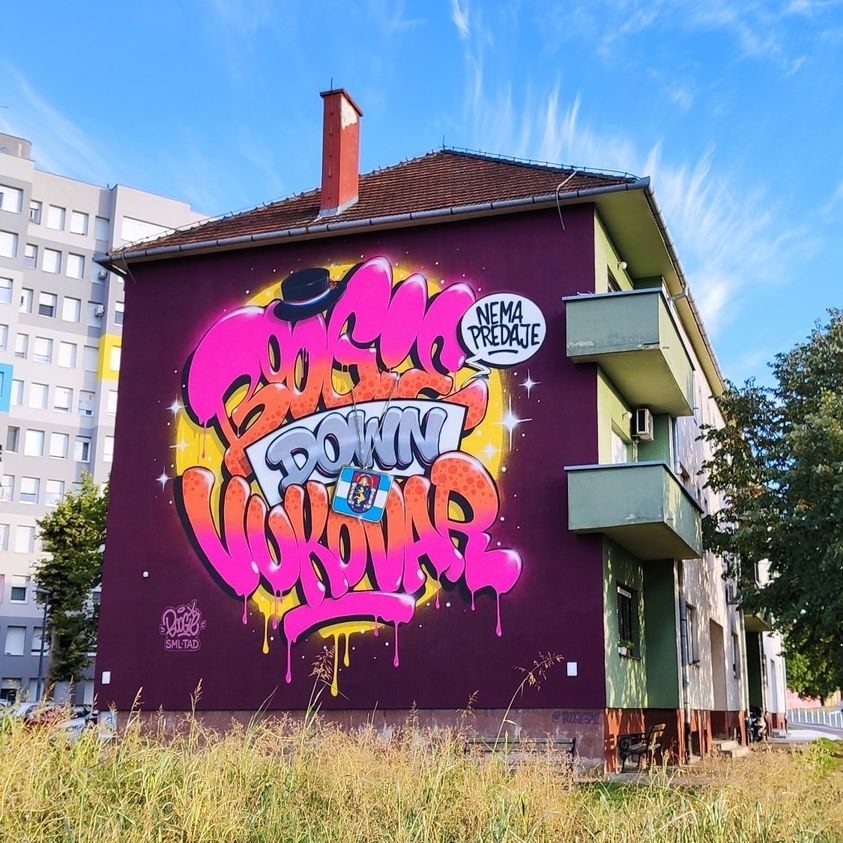
Boogie down Vukovar
Some 20 years ago, Boogie aka André Morgner formed the SML Crew in a region of eastern Germany not far from the Czech border. They've been active ever since, although Morgner himself moved to Switzerland. There, he's a now full-time artist, drawing his murals on walls of buildings, parks and offices, on commission for people like Google, Burton Snowboards and BMW. His pieces are vivid and contemporary in colour, but often take inspiration from the bragging tag work of vintage hip hop.
Tea Jurišić (Croatia)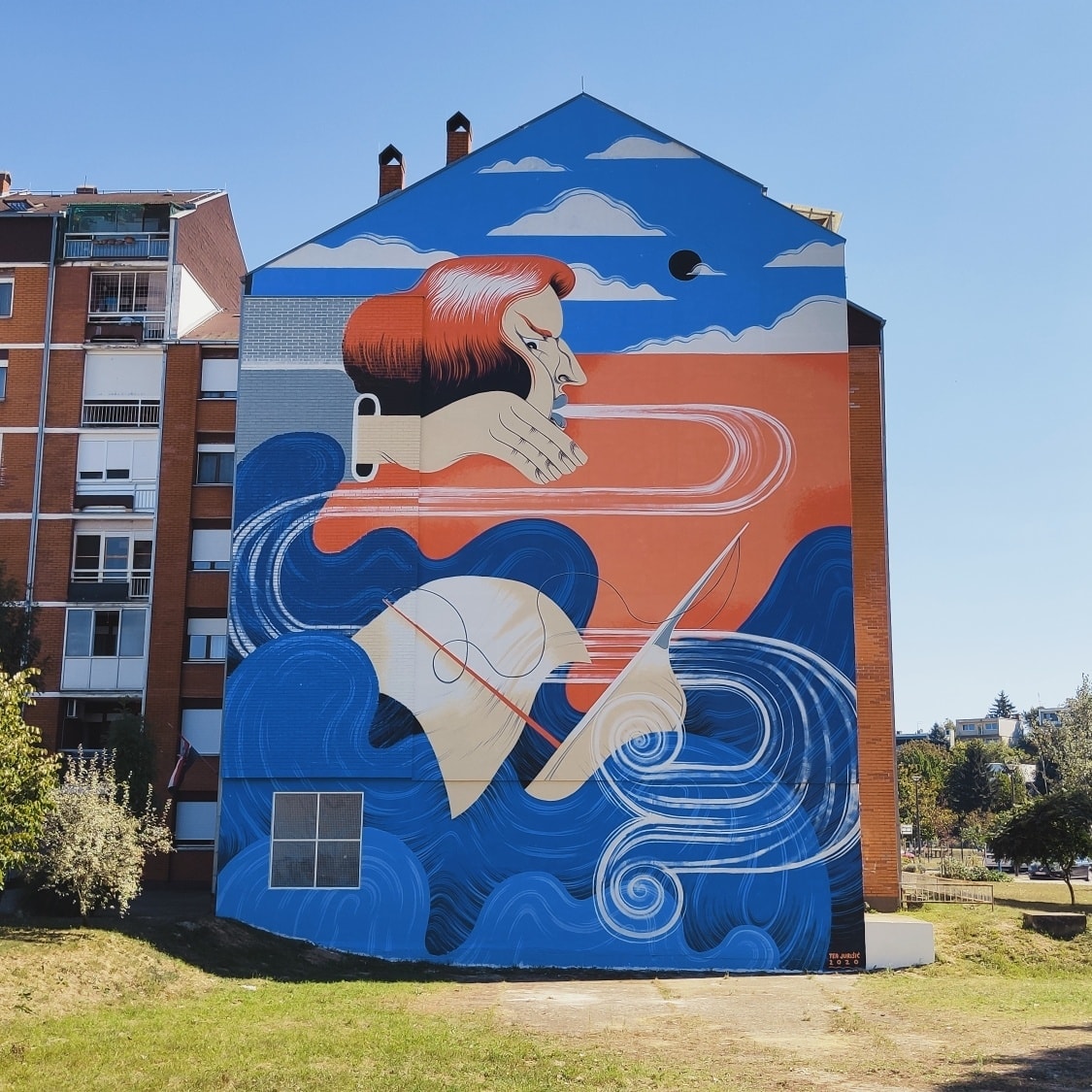
Bora
Having worked in many different modes of visual art, Tea Jurišić is, to many, known more for her drawings, paintings and illustrations than she is her street art. Yet, she has created various murals in Croatia, Slovenia, Italy and Norway. Since 2017 she has had 8 solo exhibitions in Croatia and overseas. She uses comedy and surrealism to add a playful edge to her simple storytelling.
"My challenge was a 300 square metre wall in the Olajnica neighbourhood, which I was painting between the 28th of August and the 3rd of September," said Tea. "The mural's name is Bora. It's the name of a fiercely strong wind that sometimes visits the coast of Croatia. I chose the name as I was trying to connect thematically two Croatian waters - the continental Danube river and the Adriatic sea. I relied on fresh colours that would bring a touch of summer to the gloomy days of winter that lie ahead. I tried to adapt the colours to the building, and the environment around the building. My experience in Vukovar was wonderful - from friendly people, a beautiful city and delicious food. It was an experience to remember for a lifetime."
Eugen Varzić (Croatia)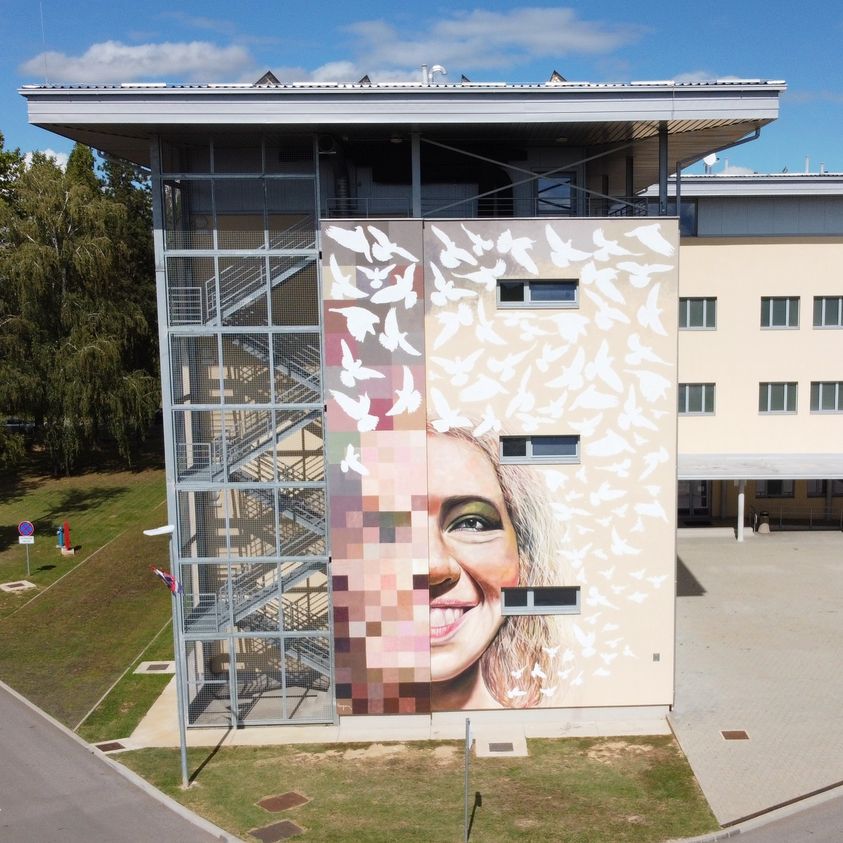
Future Freedom
A graduate of the Academy of Applied Arts in Rijeka, Eugen Varzić is something of a classicist operating inside wholly modern mediums. His paintings adorn city streets in Madrid, churches and the streets of his native Istria where, in Poreč, you'll also find his two mosaic sculptures, Trosjed and Konfin.
"This piece was a challange for me, because of the size, the positioning and the motif," Eugen said of his piece of Vukovar street art 2020. "The whole place used to be a military camp. After the fighting finished, they turned it into a memorial centre for the war, a kind of museum where you can see the planes, tanks, learn about Vukovar. Kids from all over Croatia come. There is a hostel where they can stay. When they asked me to paint this wall, because of where it is, that put some boundaries on my work. I had to think differently. This wall is not so easy to paint on – it's broken, it has windows, it's surrounded by steel, there are fire stairs."
"I decided on a half portrait of my daughter's smiling face. I wanted to show something happy and which looks forward into the future. Half of the face is pixalated, so it's clearly placed in the 21st century. I used squares within the piece because it's so connected to Croatia – you can see them on the shirts of the national team football players, on the Croatian flag. There are also 87 birds in the paintings. That number was chosen because there were 87 days of fighting before the town of Vukovar fell."
Arsek & Erase (Bulgaria)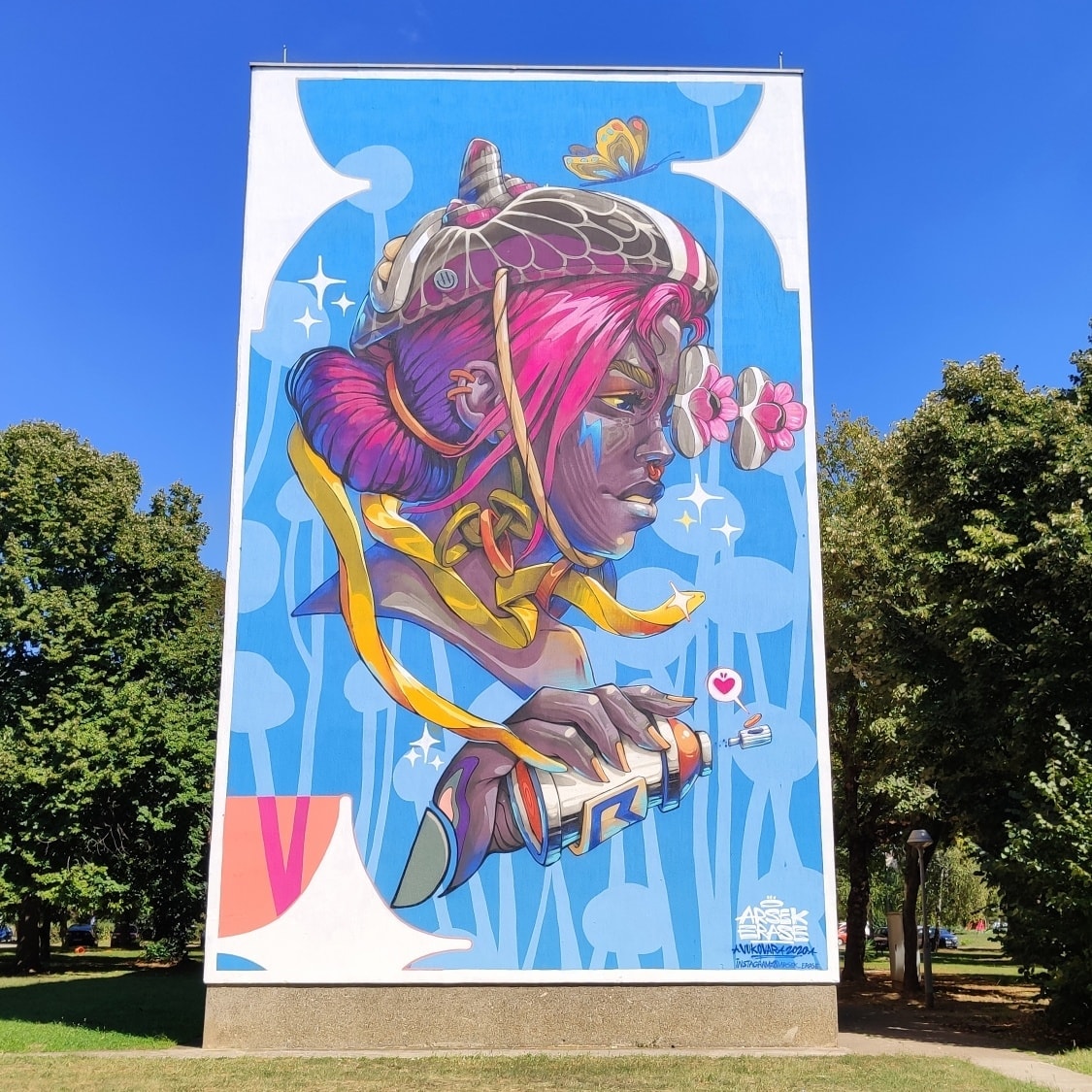
The Golden Snake
Operating as a duo for 20 years, Arsek & Erase create playful, bright and colourful images - and highly memorable characters - using illustration and surrealism. They have painted works all over Europe, their own native Bulgaria, and in Russia, China, Taiwan, El Salvador and the United States.
All photos Vukovar street art 2020 © VukovArt
For the latest travel info, bookmark our main travel info article, which is updated daily.
Read the Croatian Travel Update in your language - now available in 24 languages
Vineyards of Slavonia and Baranja Revived!
September 4, 2020 - A new season is nearly here, which can only mean one thing - the beginning of the wine harvest! The vineyards of Slavonia and Baranja have been revived.
Pickers entered the Feravino vineyards to pick grapes for sparkling wines that need a little more acid in the first days of September. It begins at dawn with the sun's first rays; a common toast symbolically marks the beginning of the harvest toast. Toasts were made with Francesco and Grasecco sparkling wines and fine plum brandy and cider brandy, which was given by Ivan Ergović, President of the Management Board of Nexe grupa d.d., who himself attended the harvest.
Slobodan Kadic
First came Frankovka and Graševina, and the harvest will continue with the varieties Chardonnay, Pinot Blanc, Graševina, and red varieties Pinot Noir, Merlot, Cabernet Sauvignon, Cabernet Franc, and Syrah.
Slobodan Kadic
"Each wine-growing year has its challenges, and each is special in its own way. The winter was mild and without precipitation, and the movement of vegetation in the spring was accompanied by a large number of sunny hours and a small amount of rainfall," says Lucija Kužir, harvest coordinator, emphasizing that there was no quarantine and work from home for vineyards.
Slobodan Kadic
However, at the beginning of August, the Našice area, where they have two vineyard sites, was hit by a storm that left its mark on the vine and the crop. The remaining grapes in these locations are in excellent condition, and the final stage of ripening is going very well. In addition to the permanent employees of Feravin, the vineyards are harvested by about a hundred seasonal workers who, in addition to organized transport, also have a hot meal this year.
Slobodan Kadic
"We are building two new cellars so that the capacity for controlled fermentation and aging of wine will not be lacking. One basement is equipped with stainless steel tanks with a capacity of 570,000 liters. The other has wooden barrels of various volumes of 1000-6000 liters, with a total capacity of 147,000 liters," explains Ivan Maričić, director of Feravina, emphasizing that quality is ahead of quantity.
Slobodan Kadic
Other winemakers from Slavonia and Baranja have also started harvesting. Most of them are satisfied with the first results and hope that the 2020 harvest will be successful and the wine flawless. The folk song says: I pick grapes, red and white...
Slobodan Kadic
And it'll always be wine in the end - tell your story, red, white or maybe rosé!
Slobodan Kadic
For the latest travel info, bookmark our main travel info article, which is updated daily.
Read the Croatian Travel Update in your language - now available in 24 languages
Join the Total Croatia Travel INFO Viber community.
New Croatian Geothermal Projects on Horizon in Slavonia, Podravina...
September the 3rd, 2020 - Despite the ongoing coronavirus pandemic which has thrown a spanner in the works for many a previously planned investment, not everything has been forced to grind to a halt or be put back on the shelf and await better economic circumstances. New Croatian geothermal projects are on the horizon for Slavonia, Podravina and Medjimurje as numerous bids arrive.
As Novac writes on the 2nd of September, 2020, as many as nine bids were received for the exploration of geothermal waters in four exploration areas in the areas of Slavonia, Podravina and Medjimurje, which were submitted by seven different bidders, the Hydrocarbons Agency reported on Wednesday.
The Hydrocarbons Agency announced tenders for four exploration areas in Croatia intended for the exploration of geothermal waters for energy purposes in early June, and the tender closed on Tuesday, September the 1st, 2020.
These are the research premises Ernestinovo, Lunjkovec-Kutnjak, Legrad-1 and Merhatovec, and the Tender Commission determined that nine bids from seven different bidders were received for the tender on this upcoming Croatian geothermal project.
''The next step is the evaluation of the received bids, but it's already clear that the tender, despite these challenging times, was a complete success because bids were received for all of the announced locations, and the applicants are reputable Croatian and foreign companies with experience in developing geothermal projects,'' read a statement from the aforementioned agency.
They announced that they will present all of the details about the potential investors and proposed projects after the Commission properly evaluates the received bids.
''Croatian geothermal projects have the potential to be the flagship of energy transition, given that the exploration will take place in areas for which geothermal potential has been determined on wells initially drilled for in the exploration and exploitation of oil and gas,'' concluded the Hydrocarbons Agency.
For the latest travel info, bookmark our main travel info article, which is updated daily.
Read the Croatian Travel Update in your language - now available in 24 languages
Meet HGSS The Croatian Mountain Rescue Service
August 19, 2020 – All weather, all terrain, all year round – meet HGSS The Croatian Mountain Rescue Service, amazing volunteers who will never let you down
They're never far from the news. For the last two weeks, members of HGSS The Croatian Mountain Rescue Service have yet again been on the TV news every night. They're leading the search for a summertime visitor, a Polish hiker missing on Biokovo mountain.
But, watch again this winter and, for sure, they'll be in the headlines once more. Whether, they're scaling mountain ranges in the unbearable heat of high summer, searching underwater caves, flooded rivers or the sea, breaking through wild forest or trudging through metres of snow, they undertake their search and rescue missions over every terrain, in every weather condition, in every month of the year, all across Croatia. And, they all volunteers.
Marc Rowlands meets the head of service for HGSS The Croatian Mountain Rescue Service and three of its volunteers to find out who they are and what makes them do what they do.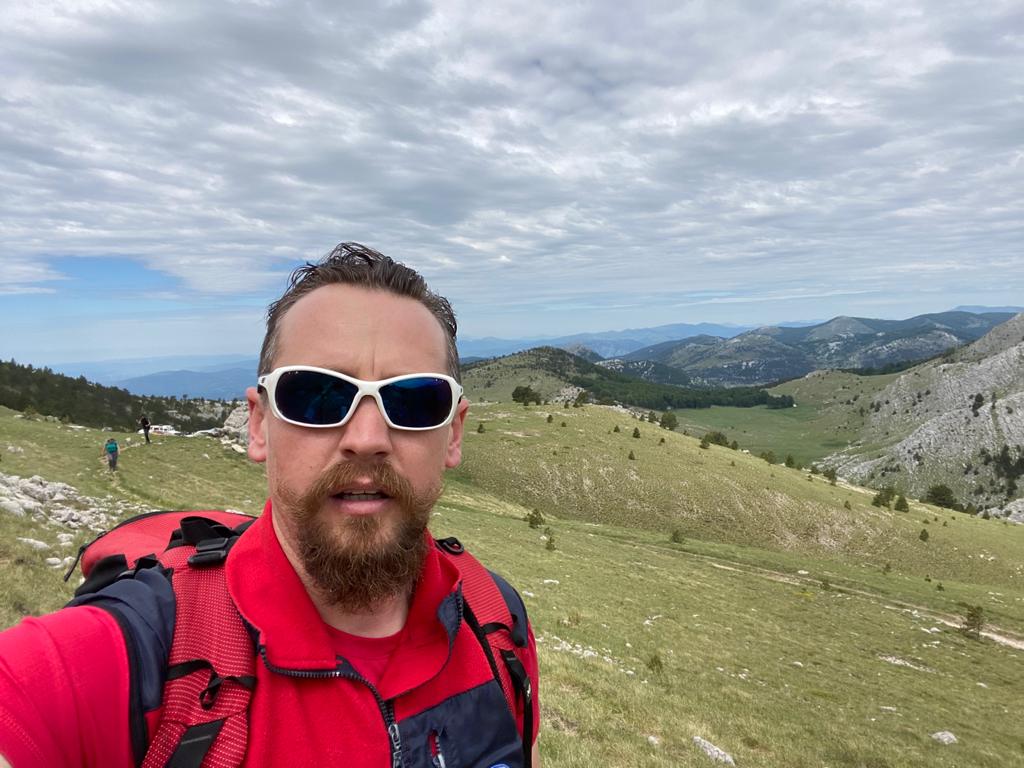
Josip Granić, head of service for HGSS The Croatian Mountain Rescue Service
My name is Josip Granić. I'm the Head Of Service for HGSS The Croatian Mountain Rescue Service. We've had an extremely busy couple of weeks. Being head of service for an organisation like this under such circumstances means you're always on the phone; co-ordinating, talking to outside organisations, members of the press. Communication. It's a 24/7 job, 365 days a year. If people need help, you can't take a holiday. Not at this level of the organisation.
We have around 1000 members. There are 11 paid positions in the main organisation and 25 people we pay to run the administration in each of the teams or stations we have. All of the members who perform the search and rescue are volunteers. We have pilots, surgeons, nurses, students, professors, every part of society.
I'm originally from Kaštela, but my home station is in Karlovac. I've been there for 15 years. I've been Head Of Service for two. Since I assumed the position, I've spent most of my time in the car. I travel all over Croatia.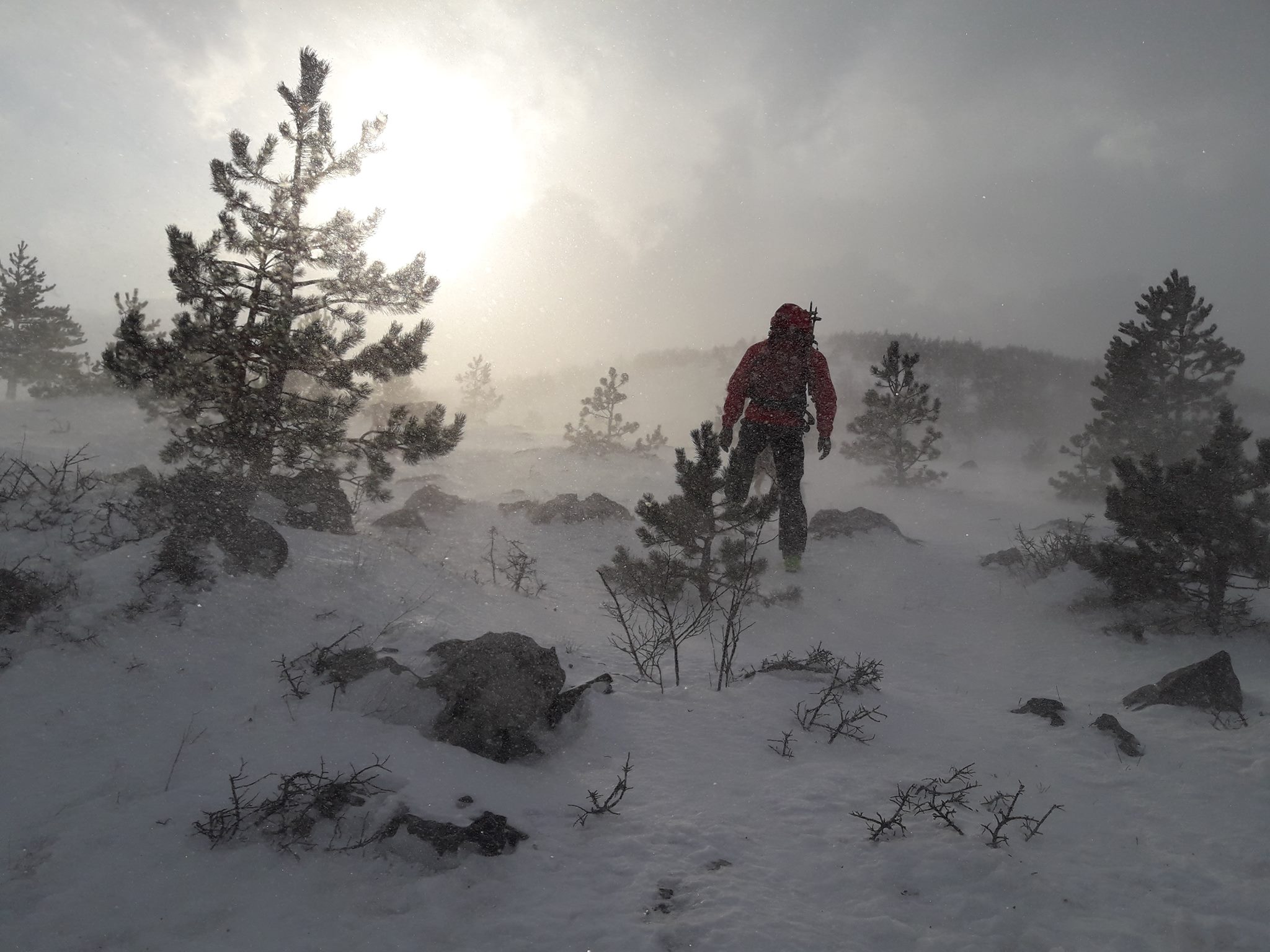
HGSS The Croatian Mountain Rescue Service missions can be hampered by extreme weather conditions © HGSS The Croatian Mountain Rescue Service
To get a certified position as a mountain rescuer in Croatia you all do the same training. It doesn't matter if you come from Slavonia, Dalmatia or Istria, you must have the knowledge and ability to deal with circumstances in any terrain; caves, pits, mountains, on snow, underwater.
Depending on where your station is, the type of call-outs you get could be very different. In Slavonia, 90% are for missing persons - searching forests, rivers, and in floods. We've had a big search on Biokovo mountain for the past 16 days. The stations from Split, Makarska, and Dubrovnik were at first involved, then teams from all over Croatia. It's not the same as Slavonia. The terrain is very different, so you have to be good at a particular set of skills. But, the largest percentage of call-outs is still missing persons. It's 70% of our work nationwide. The other 30% are rescues.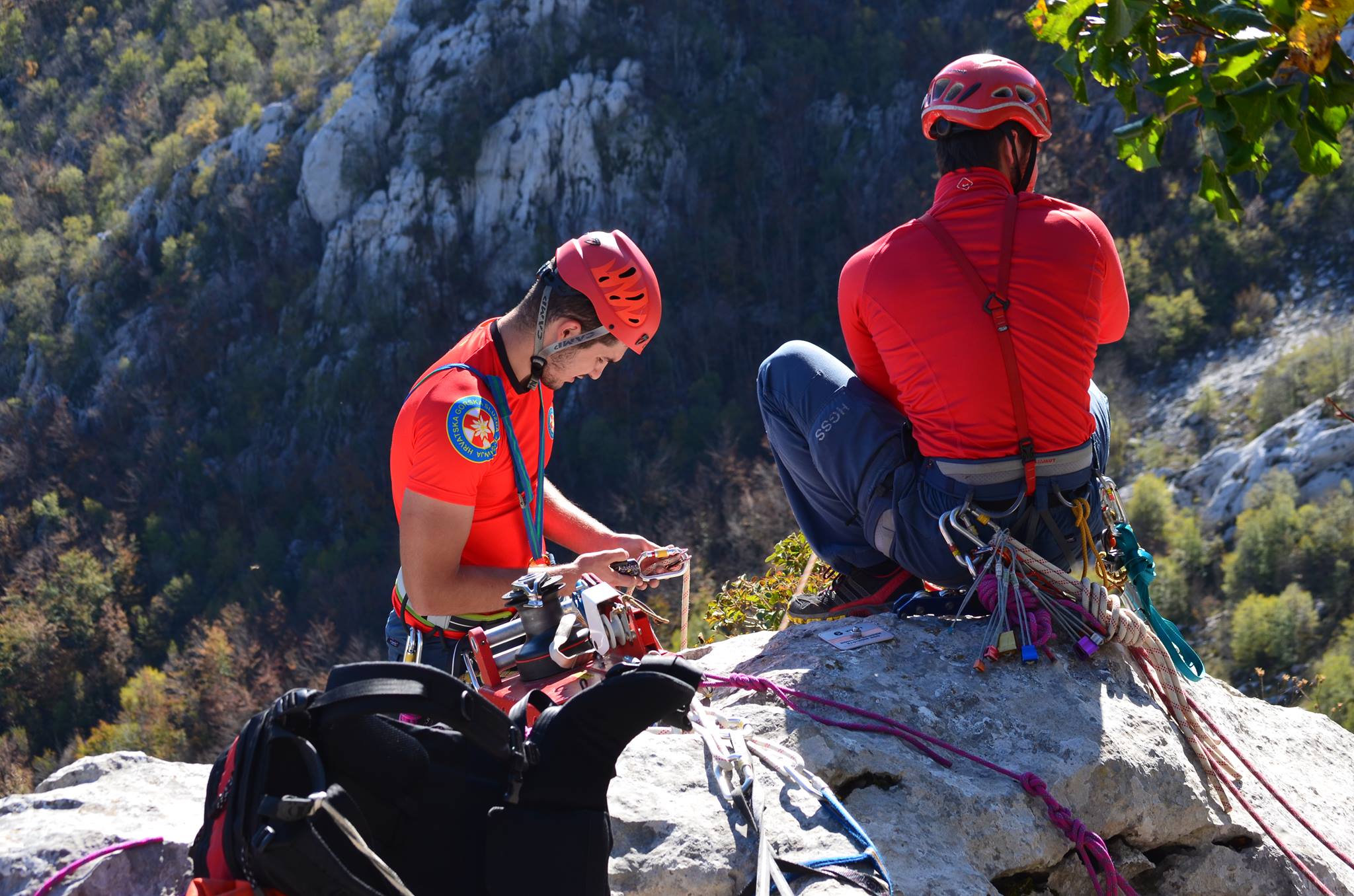
HGSS volunteers are educated to use a wide range of technical equipment. They are trained to operate in all the different kinds of terrain found across Croatia © HGSS The Croatian Mountain Rescue Service
There are usually 800 – 1000 missions a year across the country. We get roughly the same amount of calls in colder months as in warmer months. Only, winter months can be busier. The terrain is more difficult. There are some villages in Croatia – usually where the front line of the fighting was, around Karlovac, Kordun, Lika – and when it snows, it can be almost impossible to reach those places. But, some older people still live there. It can take days to reach them on snowmobiles, then skis, to deliver food or medecine. The other busiest places in winter are the ski resorts - Platak, behind Rijeka, and in Zagreb, on Sljeme. There are teams stationed in those places throughout the snow season.
What's the greatest danger of the job? Almost everything. Nothing in this job is easy. The greatest dangers we face are the same facing those that we rescue - underestimating the environment, nature, the conditions. That's where our training comes in.
In mountain rescue, we separate dangers into subjective, objective and technical. Subjective is the stuff you're guilty of - lack of preparedness, knowledge or equipment. Objective dangers are the ones you can't control, like sudden changes in weather, or avalanche. If you're sensible and informed, there should be no objective danger.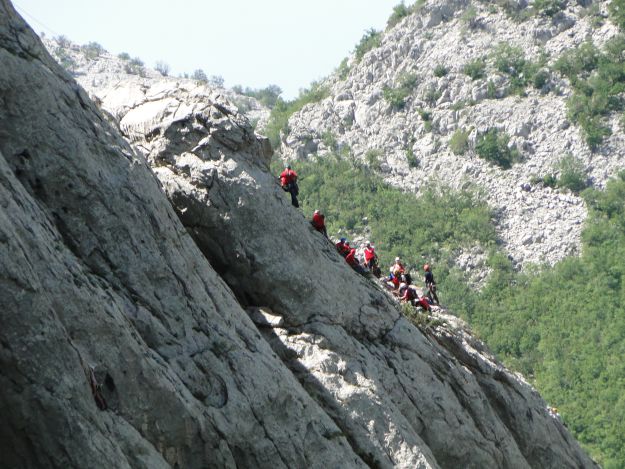
HGSS on a mission, clinging to a steep incline in Paklenica © HGSS The Croatian Mountain Rescue Service "People need to be aware at all times on the mountains. By the time most people think they may be in trouble, they've usually been in trouble for five or ten minutes already" Josip Granić.
80 – 85% of the people we rescue are Croatian. Only 15 – 20% are guests. People from Czech Republic, Slovakia, Poland, (Austria and Slovenia too) tend to enjoy nature more. They like hiking. That's the reason there are typically more rescues for those nationalities than there are for British, Belgian, French, Italian, America, Canadian or Australian guests. I don't remember the specific year, but sometime between 15 and 20 years ago we had a season where 5 or 6 Czech nationals were being searched for or, sadly, turned up dead. The media covered it and ever since there's been this myth that all the people who get into difficulty are Czech.
The question about expensive helicopter rides - why don't you charge the people you rescue - has been here forever. It's like this - if you're a tourist and you have a car accident in Croatia, the fire service, police and an ambulance will come. You won't get charged. We are a tourist country. According to international agreements, we are obliged to make everything safe for residents and guests alike. We are here, just like the fire service and police, to do our part. The Croatian air force is responsible for the helicopter rides and I have to give credit to them - they are crazy good pilots. Amazing. Even if we did charge everyone we saved - and most of the 85% of Croatians we save would struggle to pay - it still wouldn't be anywhere near the money required to run this service.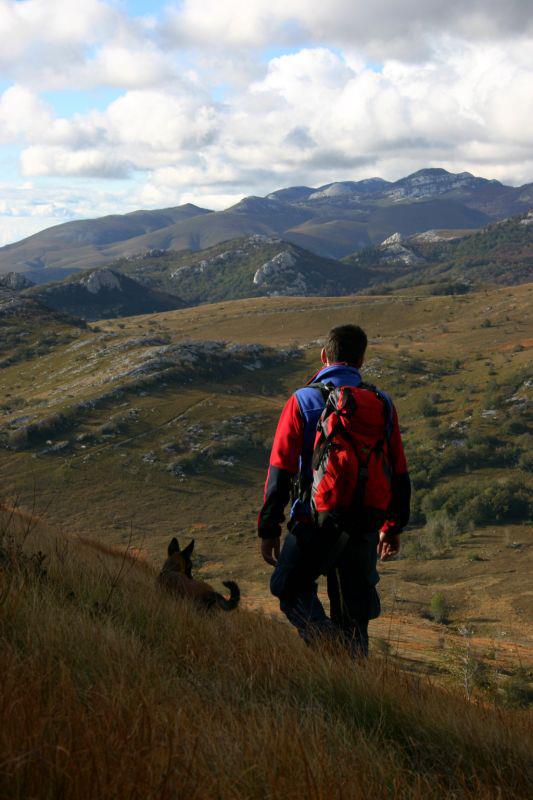
The Croatian Mountain Rescue Service used specially trained dogs on their searches © HGSS The Croatian Mountain Rescue Service
In 2007, I got a new search dog. It came from the Ogwen Valley Mountain Rescue service in North Wales. We cooperate a lot. We were sent out on a job to look for a three-year-old male child who had gone missing near Požega at the beginning of January, wintertime. His grandma was watching him and they were in a house on the edge of the woods. Early in the morning, he was playing with a dog. It suddenly ran into the forest and the boy chased after him. The grandmother didn't see it happen. I found him using my new dog, just after 8 o'clock the next morning. He'd been alone in the freezing forest for almost 20 hours.
Time is really moving fast on a job like that, because it's a kid and because it's so cold. Survival rates in such conditions are not good after 24 hours. When I found him, saw that he was alive, those big eyes looking up at me, it's a crazy feeling. You can't describe it. You can't compare it. A lot of positive emotions.
Every mission is special. We meet them all with the same level of determination and professionalism. But, it's the ones where you know you've really saved someone that stand out in the memory. Not the broken leg, where you transported someone – sure, that's an excellent job. But, when you know you've saved someone's life, that they definitely wouldn't be here now if it weren't for you, that's what makes it all worthwhile.
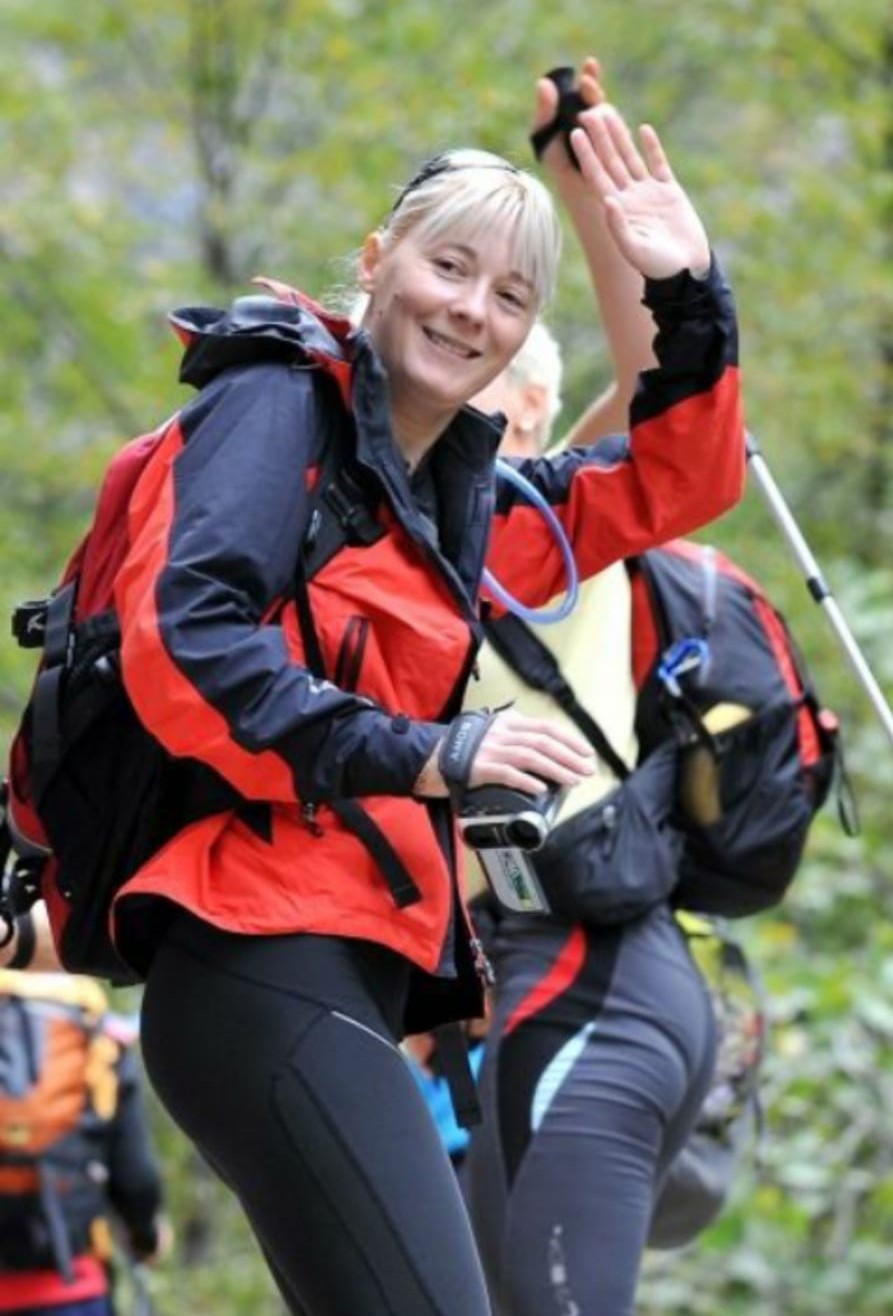
Jana Mijailović, volunteer for HGSS The Croatian Mountain Rescue Service
My name is Jana Mijailović, I'm 48 years old and I'm from Zadar. I finished school to be a teacher, but I never did it. My husband and I run a company that does plastic and aluminium windows for houses.
I started to go into the mountains when I was at high school. I never had the ambition to be part of mountain rescue services – people just noticed me on the mountains. They said I'd be good at it and asked me to join. I met my husband on the mountains. We are both volunteers for HGSS The Croatian Mountain Rescue Service. I've been doing it for 16 years.
I was a member of the first and second all-female Croatian expeditions to the Himalayas. We first climbed Cho Oyu in 2007, then Mount Everest in 2009. Croatia is the only country in the world that has only one successful male climber of Mount Everest, but four successful female climbers. I sometimes work as a guide too. I guess you could say I'm all about the mountains.
Being a climber, an Alpinist, I know that if I get into trouble, it's only my HGSS colleagues who can help. I feel this instinctively. I cannot be in the house, safe and warm, knowing that maybe someone needs help that only I can provide.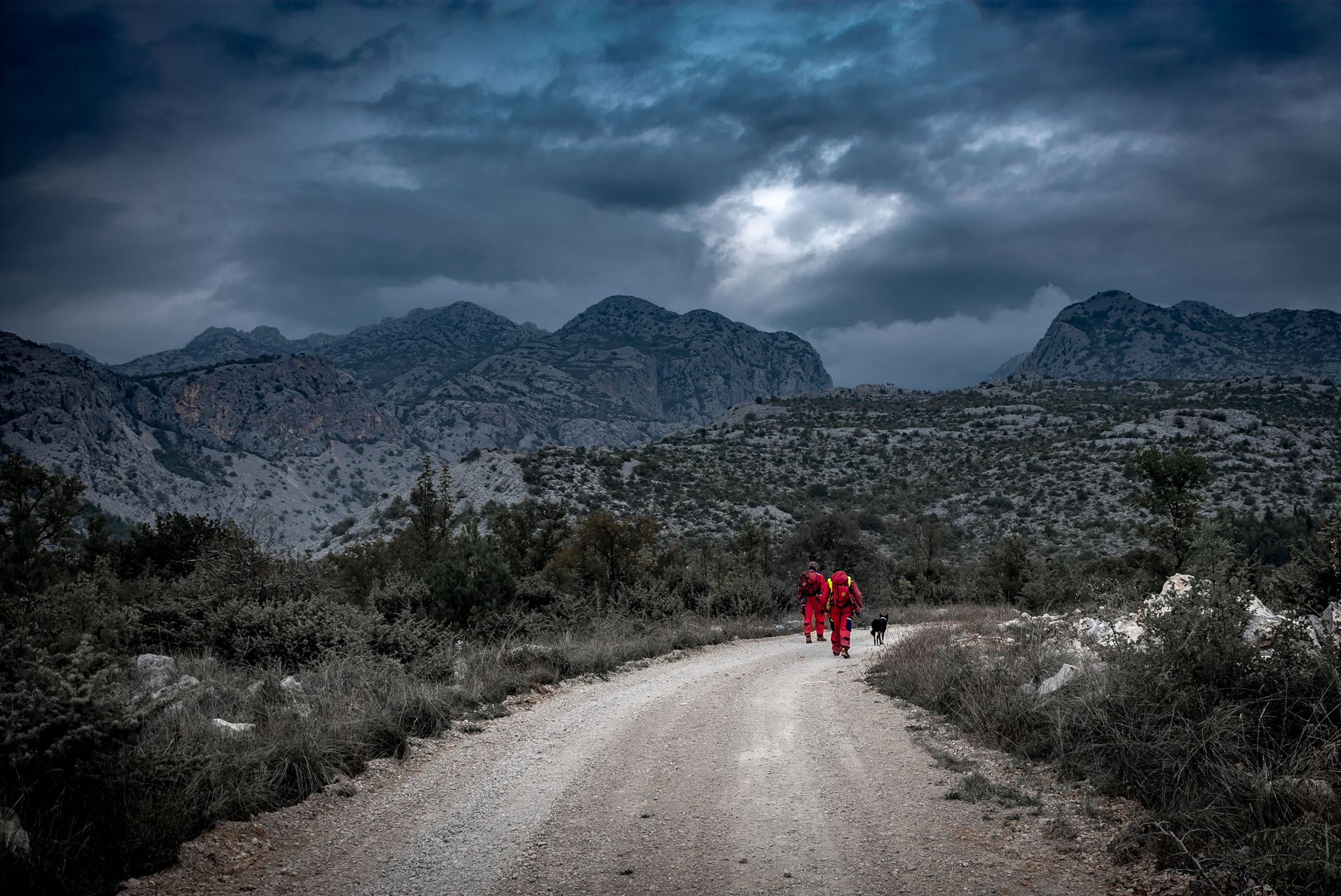
HGSS The Croatian Mountain Rescue Service members entering Paklenica under foreboding skies © HGSS The Croatian Mountain Rescue Service
I've really been on so many expeditions with HGSS. My station are on duty in the season at National Park Paklenica and I'm now the coordinator. Climbers from all around the world come and so there are many interventions. None of them are easy because the terrain is incredibly difficult. You really have to be in shape and know the techniques inside out.
I'm very proud of my statistics. Everyone I've rescued, who was alive when I reached them, is still living today. Unfortunately, not everyone we reach is alive when we arrive.
I remember one time, my husband and I were having dinner. We were arguing about the techniques and knots for moving a stretcher down a vertical climb. The training is so intense, you really have to know it well, and I guess that's just the kind of people that we are, that we would be arguing about it in our free time. Ha! He told me, "Why do you care? You'll never have to do that," because usually, it's really strong guys who do that specific job. If you're on a 400-metre-high section of rock, it really takes a lot of muscle.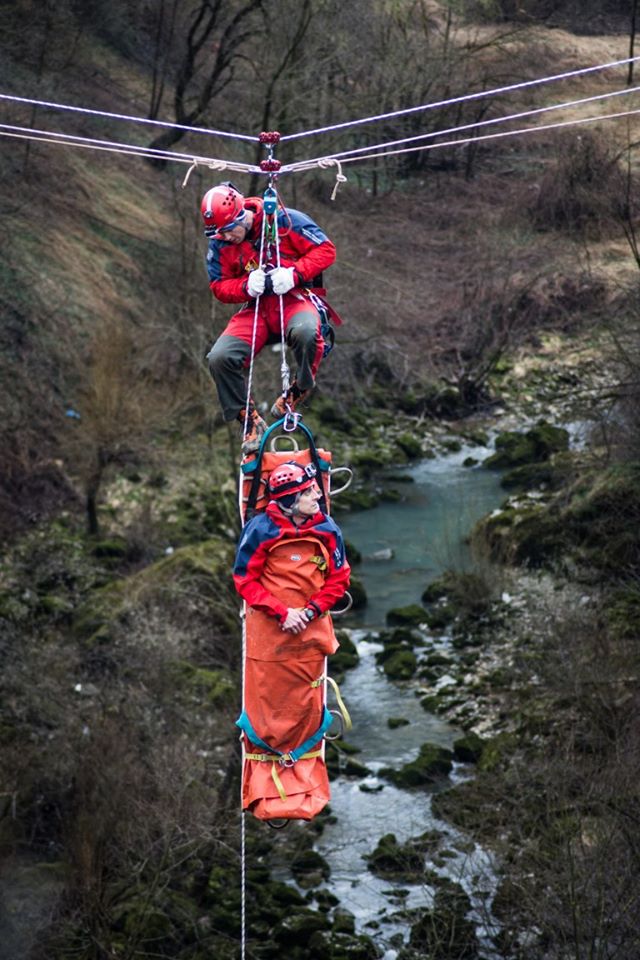
Ascending from a valley floor or descending from a mountain peak with a stretcher is a technically difficult operation, often hindered by darkness and adverse weather conditions. It requires a lot of training and a lot of muscle © HGSS The Croatian Mountain Rescue Service
In the evening, just two days later, we were called out to rescue an Italian guy who broke his leg on Anića Kuk. It's a really mighty part of the stone. And the leader of the expedition asked me to go on the stretcher. They pull you down on the ropes and you have to push very hard to keep the stretcher, the person you're carrying and yourself away from the rock, while balancing the weight of all three. It was dark, raining and with lots of Bura, the incredibly strong wind that sometimes hits us. That's probably my most memorable rescue.
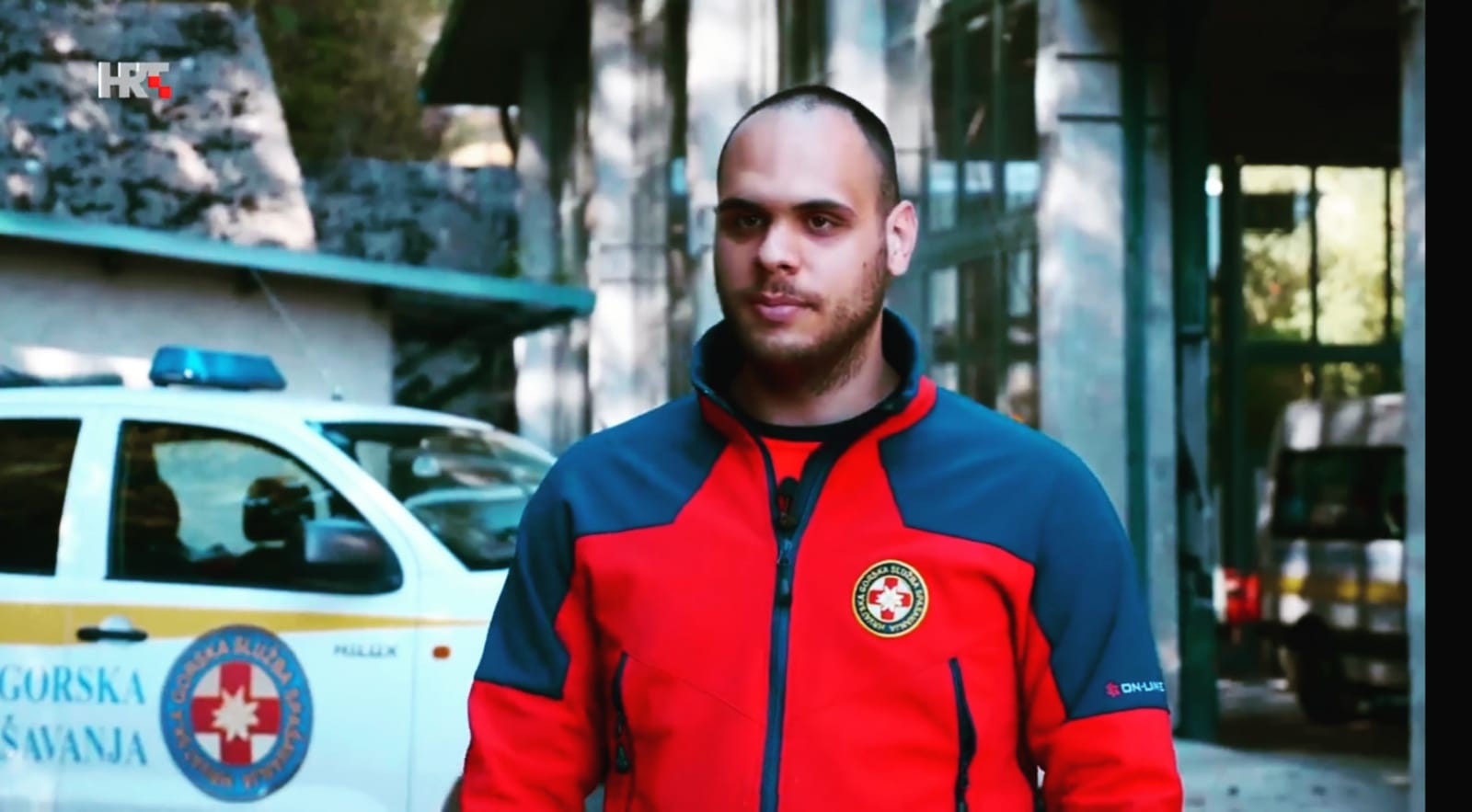
Petar Prpić, firefighter and volunteer for HGSS The Croatian Mountain Rescue Service
My name is Petar Prpić, I'm 25 years old and I'm from Hrvatska Kostajnica, just on the Croatian-Bosnian border. My station is in Novska. In my full-time job I'm a professional firefighter. I guess I have two dangerous jobs. Well, one job and one hobby.
I've always been interested in the outdoors – mountaineering, hiking, canoeing. But, that's not why I joined HGSS The Croatian Mountain Rescue Service. I just wanted to help people. I don't know, I guess it's just something in me.
We have a lot of rivers in our area. During the times of flood, we get a lot of call-outs. Our part of the country has a high percentage of elderly people in the population. A lot of them live in small villages, on the edge of the forest. We get a lot of call-outs for searches. Especially in the autumn when people go out looking for chestnuts or mushrooms. But, like all the stations in Croatia, we are here year-round if there are any actions in other parts of the country that need us.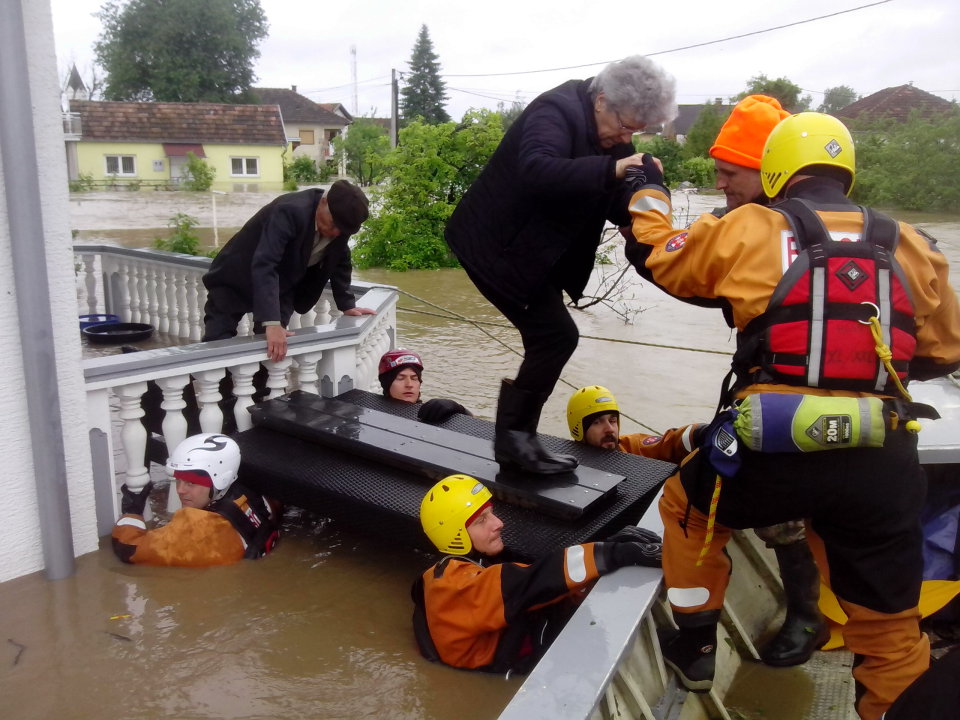
In some areas, HGSS The Croatian Mountain Rescue Service are frequently called out in response to flooding. This picture shows HGSS members on operation during the 2014 floods. In that year, flooding across the whole region was so bad that HGSS members operated not only in Croatia, but also donated their services to neighbouring Bosnia and Serbia © HGSS The Croatian Mountain Rescue Service
I was just on the search in Biokovo. The head of service called me and asked me to go. I first had to get some free days from my job. I called my boss, Zvonimir Ljubičić, chief of the fire department. He's great, very understanding, and he gave me permission. Two years ago I was called to Rab. Very hard operation, very difficult terrain.
Late last summer, we were called out to look for an older man near Glina. It was around 11 o'clock in the evening. He'd gone to look for mushrooms in the afternoon and never came back. Police were there and they sent for us.
The man had a cell phone on him, but there was no signal. There was no location given off the phone. We were a team of four, split into two teams. We went up into the woods above Glina and concentrated our search on areas where we could see there was no telephone signal on our phones. We were yelling in the dark. After an hour of search, someone answered. He'd been missing since 2pm. We found him at 2am. He was just lying there, uninjured but unwell, unable to move.
The reason it sticks in my mind is that the next day, in the morning, his daughter called me. She was so thankful, so emotional. For sure we saved his life. None of the other emergency services who were present could find him. It was down to us. We finished the operation at about 6am and then all four of us had to go immediately to our regular jobs.
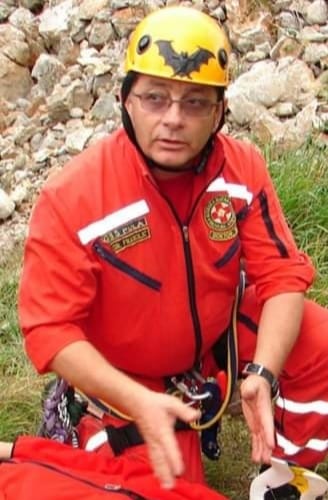
Mario Franolić, physician, ex-commando and volunteer for HGSS The Croatian Mountain Rescue Service
My name is Mario Franolić and I'm 60 years old. I'm the chief of the mountain rescue service in Istria. I travel throughout Croatia because I'm also an instructor for the medical commission of HGSS. I was born on island Krk. I'm based in Pula although I work in Rijeka. I travel a lot between the two. I've been with HGSS The Croatian Mountain Rescue Service for 18 years.
In my day job, I'm a physician. I am a senior mentor at the Institute for Underwater and Hyperbaric Medecine in the Clinical Hospital Rijeka. I'm an expert in my field of emergency medecine. I've been doing it for almost 30 years.
When I was young, I trained to be a physician in Belgrade. It was then the best medical faculty in Yugoslavia. At the same time, I also started spelunking (cave exploration). I've been doing it since 1978. Later, I was a physician in the military underwater commando unit. I lived in Austria for five years, but when I came to Pula, they were just starting the HGSS The Croatian Mountain Rescue Service station here. They asked me for help because they didn't have any medical professional on the team. I accepted. It would be a waste not to use all these skills I have.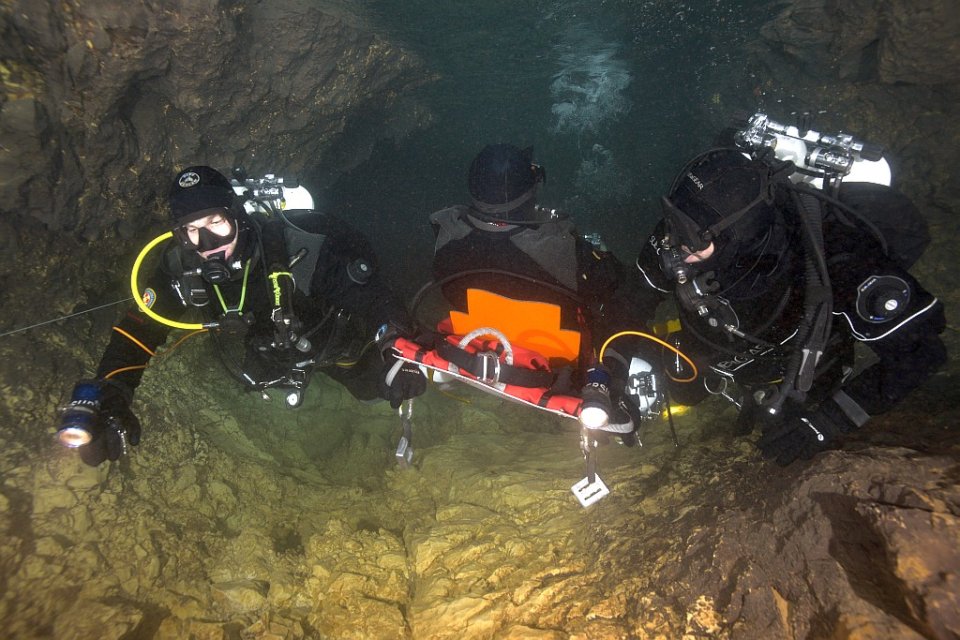
Specialist teams from HGSS are trained in underwater rescue from caves. Such caves exist all over Croatia in the karst rock, and also on some islands © HGSS The Croatian Mountain Rescue Service
Sometimes, our status as volunteers can give us problems. Although we have official duties, we are more like an NGO than something like the police. There can be legal implications. I remember one situation, very acute because a paraglider fell from the sky. None of his colleagues saw him fall. Paragliders go into the air together, but then they each branch off to do their own thing.
We had no idea about the location. We started from the last point of sighting, knowing that it could be very far from the place where he actually fell. But, we had to start somewhere. We had one mobile phone signal direction. But, you need three in order to locate someone. We only had a line on the map.
In the past, HGSS The Croatian Mountain Rescue Service sometimes had difficulties because the telephone companies wouldn't give us the information we needed in order to triangulate the position of a missing person. They would only give it to the police. But, it's a race against time. We searched for this man all day and all night. In the morning, some Croatian paragliders made private contact with a guy from the phone company. They begged him to release the information we needed. Although he could lose his job, giving such information to private citizens, he did it.
We found the man about 150 metres from where we were. Sadly, he was already dead. It was very small comfort to see that he had died instantly, on impact. It's unbearable when you reach someone you could have saved if only you had got there quicker, especially in an instance such as this, where we were hindered by a lack of information that was available. I think it moves more quickly now, but still we have to go through the police.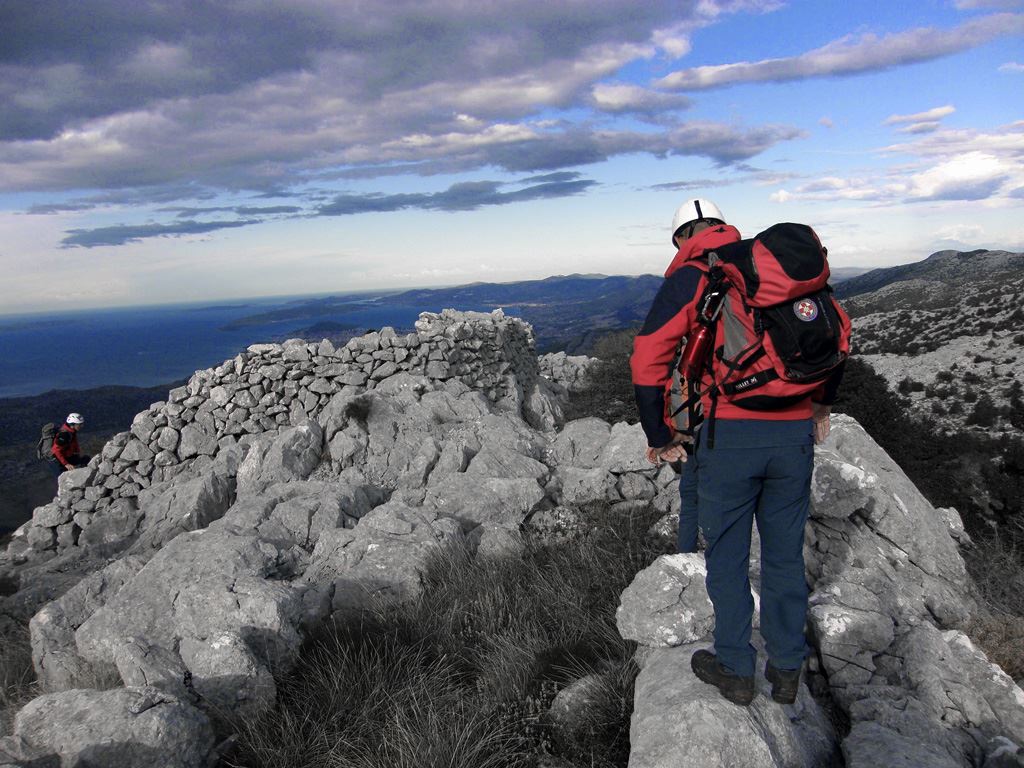
© HGSS The Croatian Mountain Rescue Service
One of the most emotional operations I went on was around five years ago, the rescue of a young girl - maybe two and a half to three years old – who got lost in the woods in a small place in central Istria. She chased into the forest after some dogs around 10 or 11 in the morning. The family saw immediately that she had disappeared and started to search. About two hours later, we were called out. It was impossible for the family to find her.
About 300 people came – my station, the Rijeka station, hunters, firemen, police and volunteers. In such an operation, the police are the lead service. But, 99% of the time they leave the organisation of the search to HGSS The Croatian Mountain Rescue Service. We are the only organisation who is very well educated in organising searches. When other people do searches, they use intuition. But, people all have different intuition. It can be chaotic. We are highly trained for this. There are procedures, recognised internationally, that we follow. We found her early in the morning, at around 7 o'clock. The dogs were lying on each side of her, giving her warmth.
All photos courtesy volunteers and HGSS The Croatian Mountain Rescue Service


